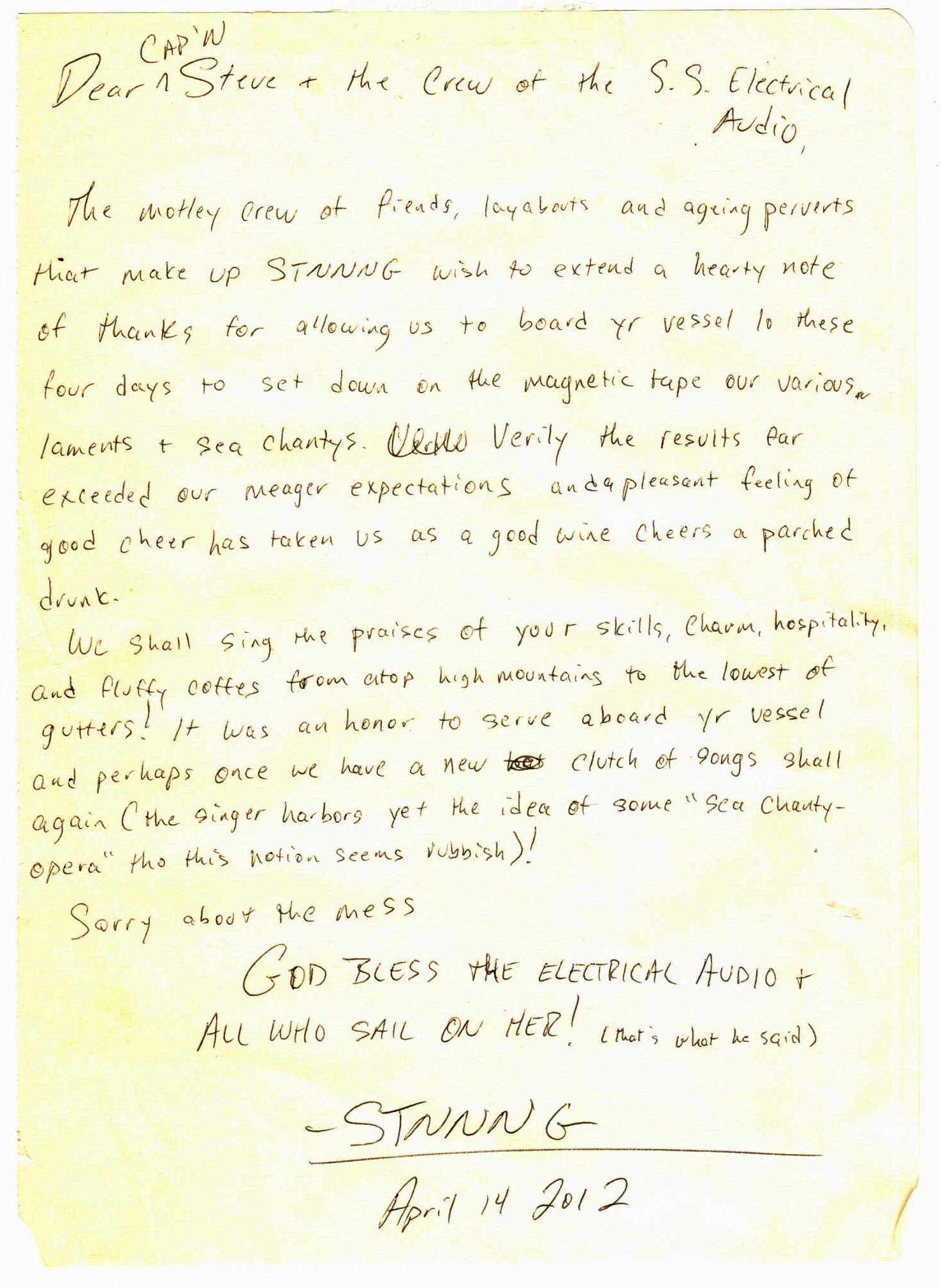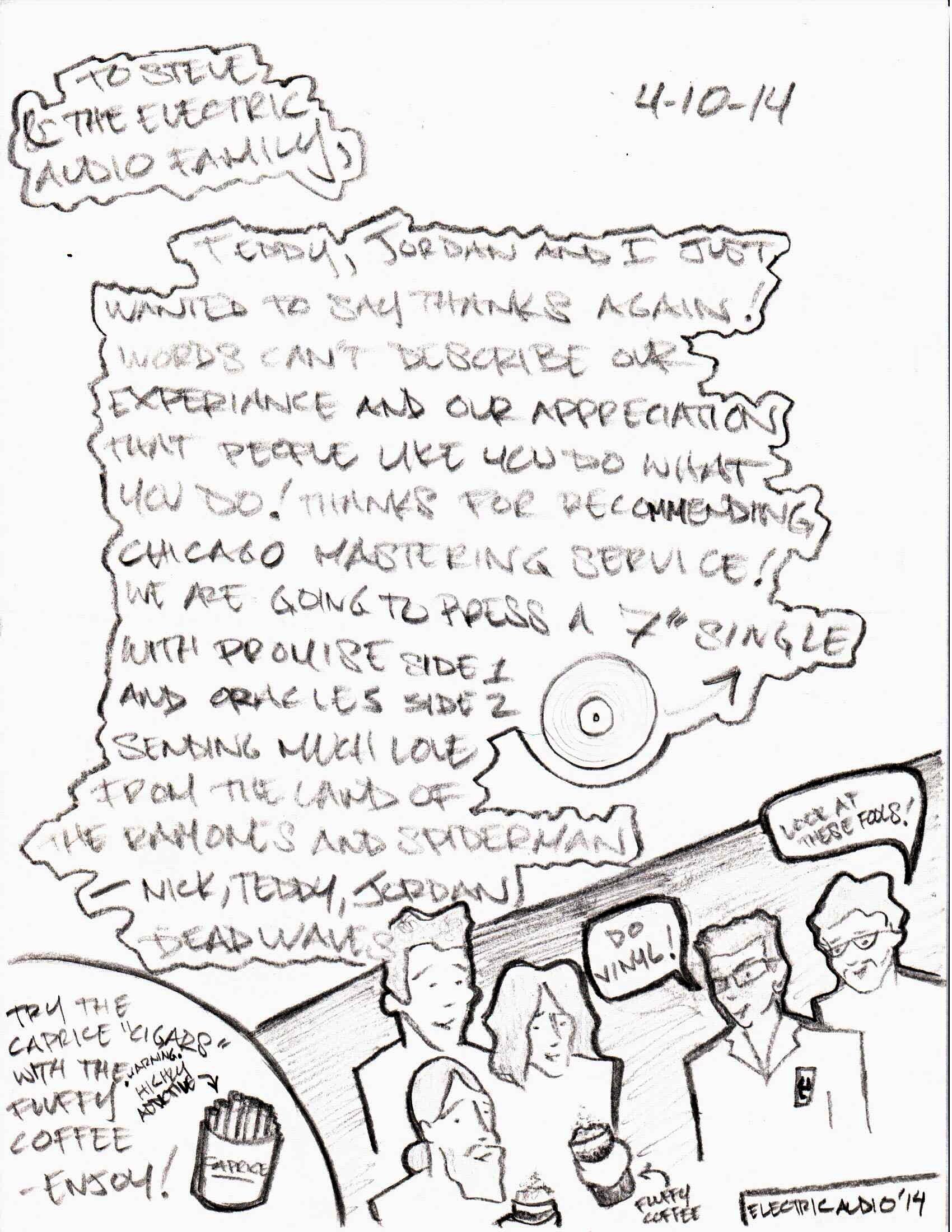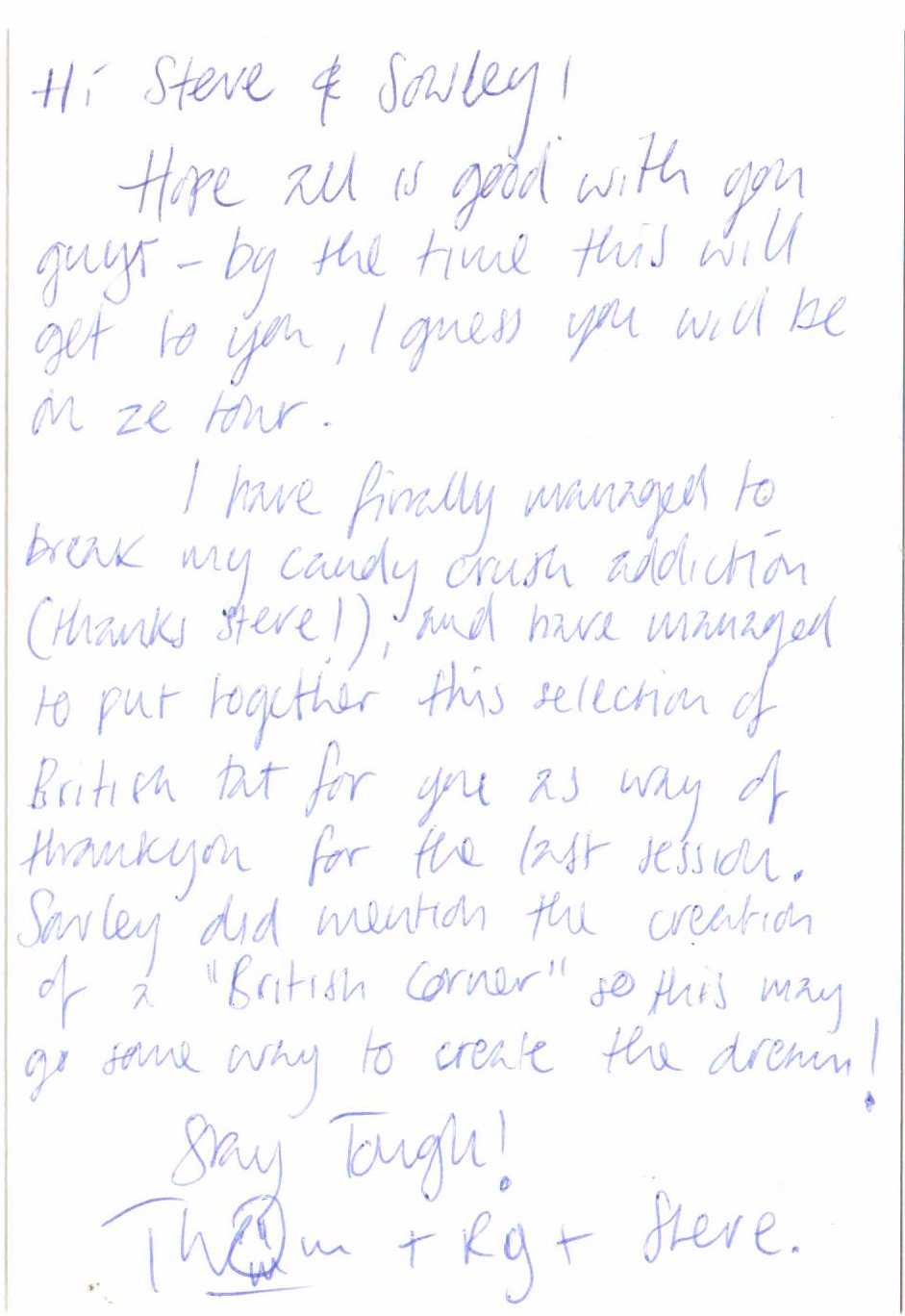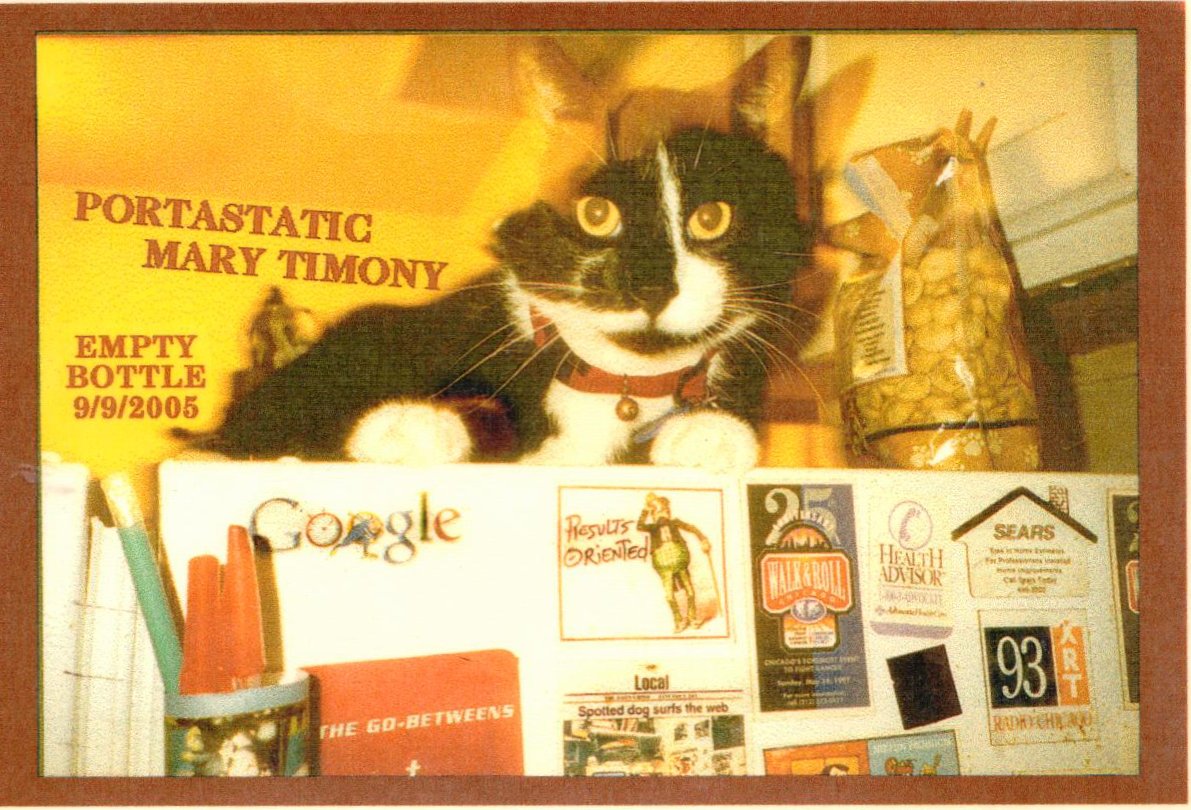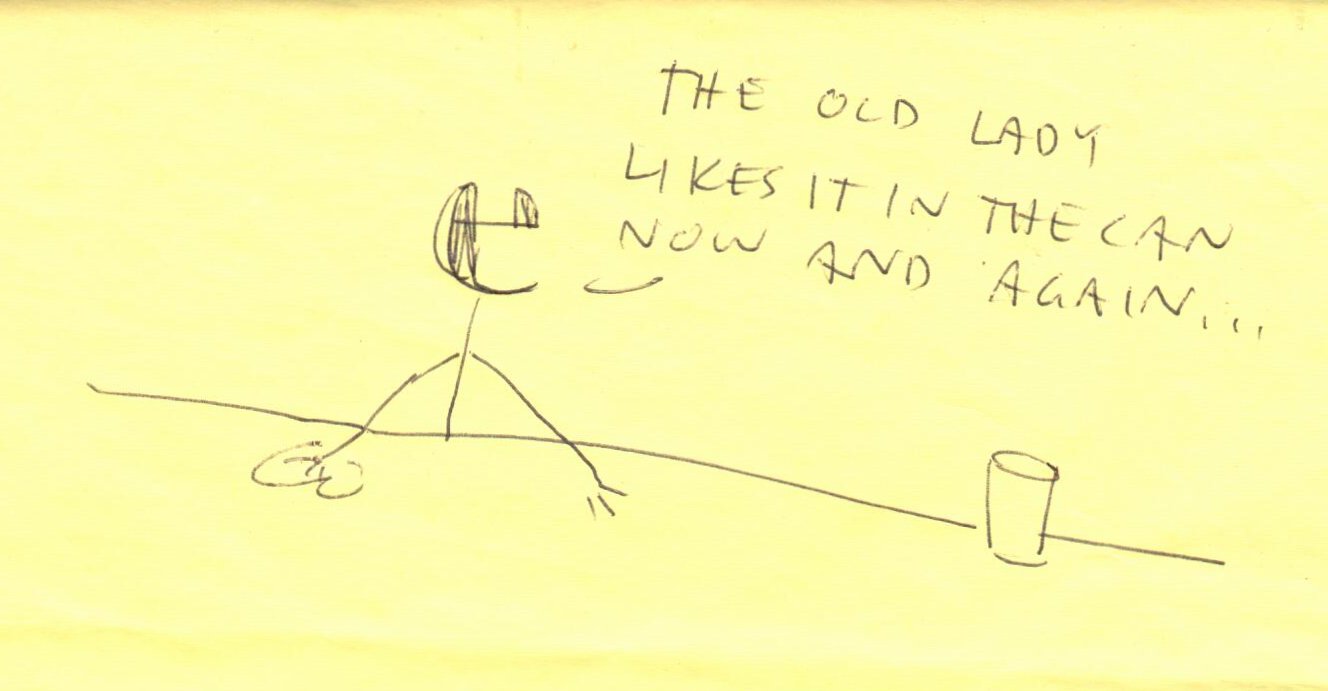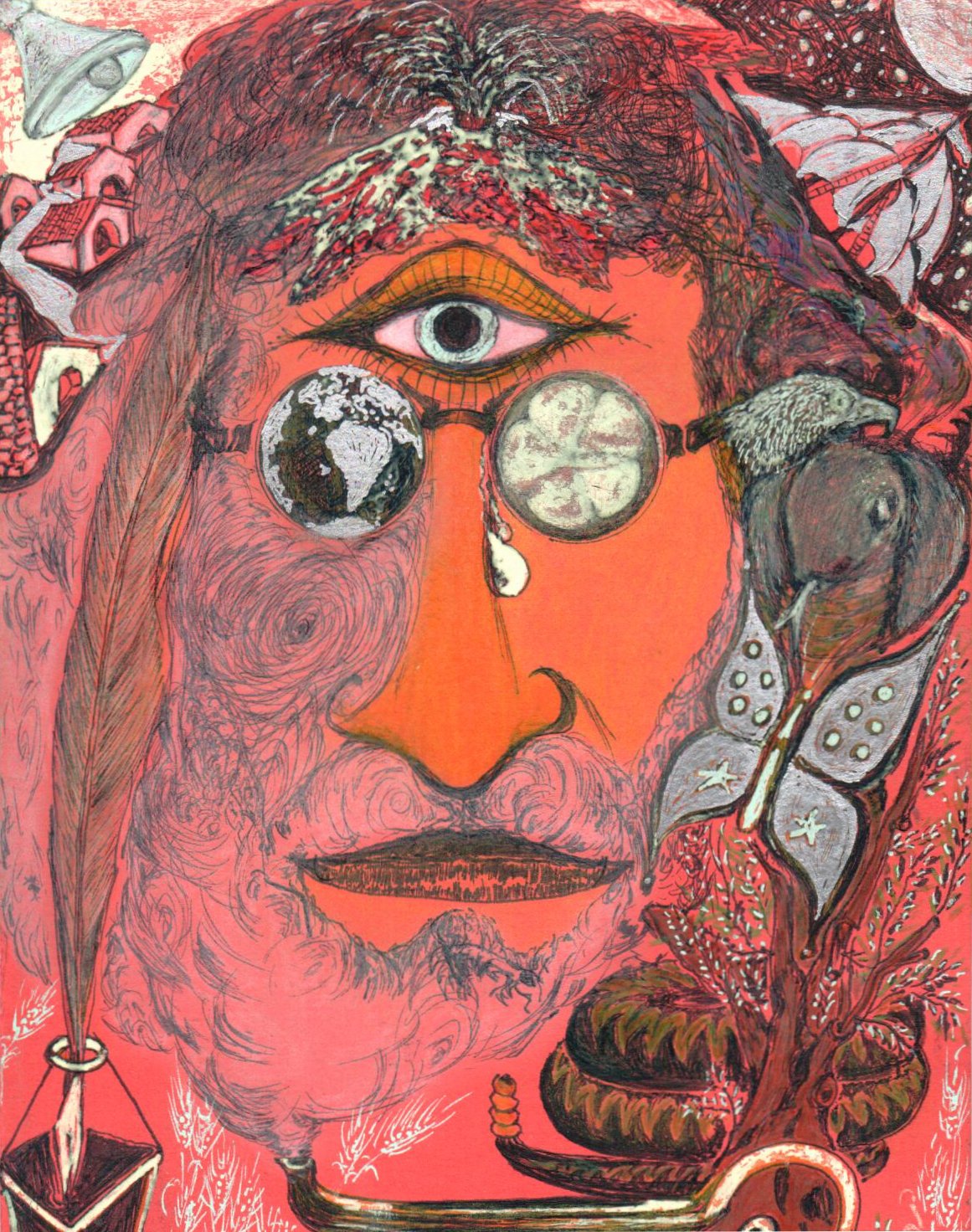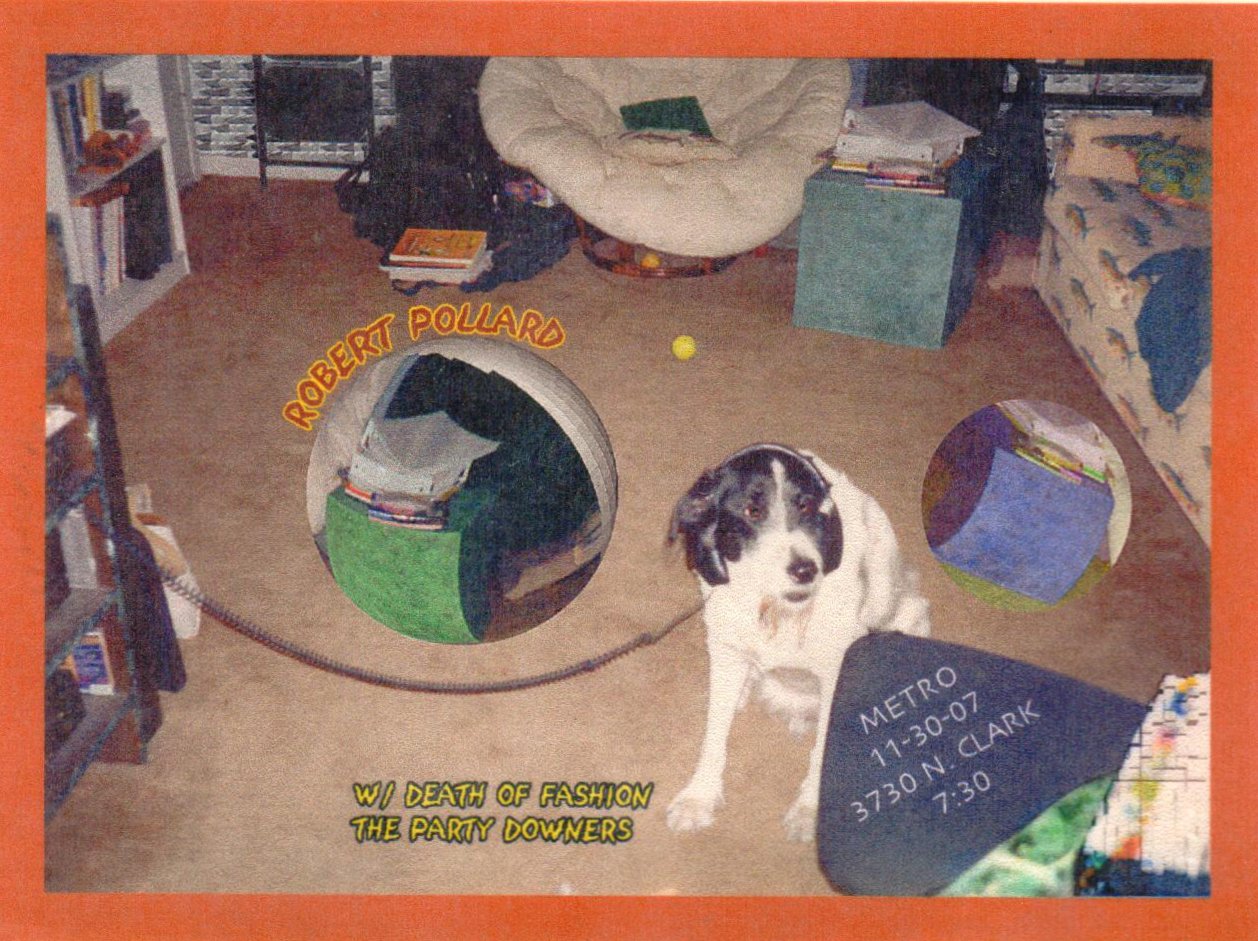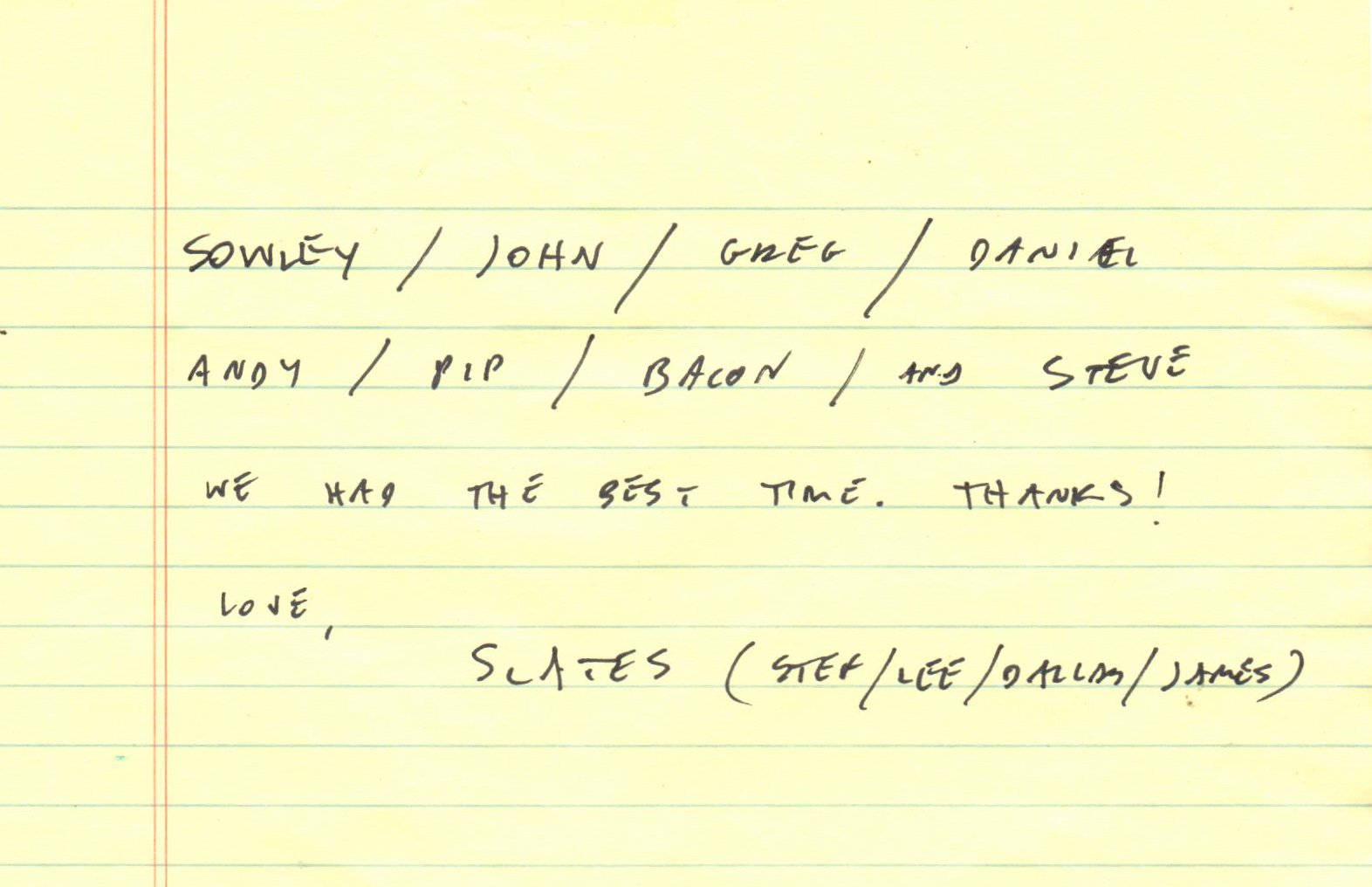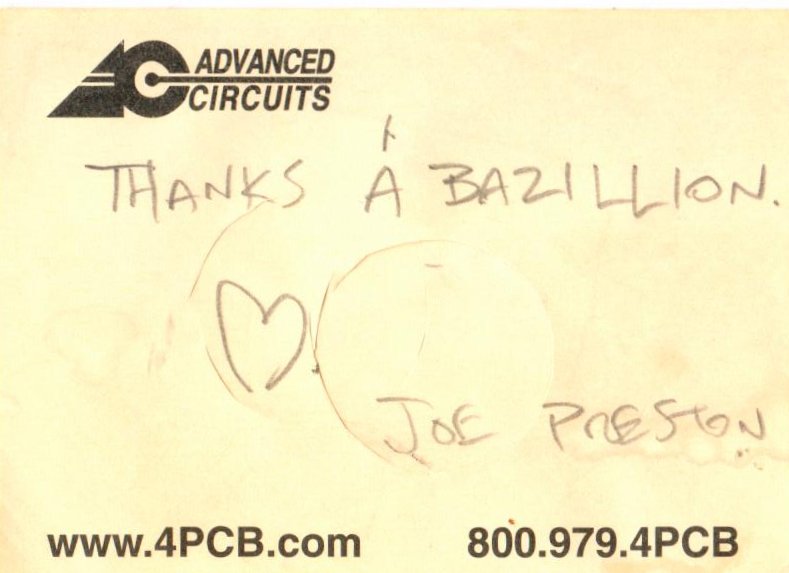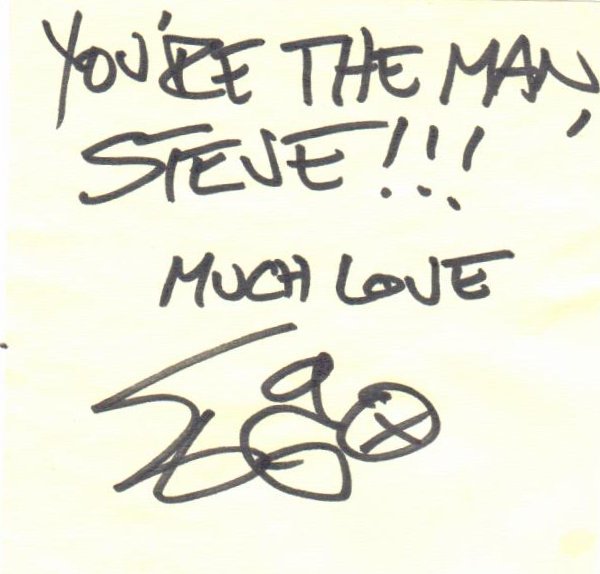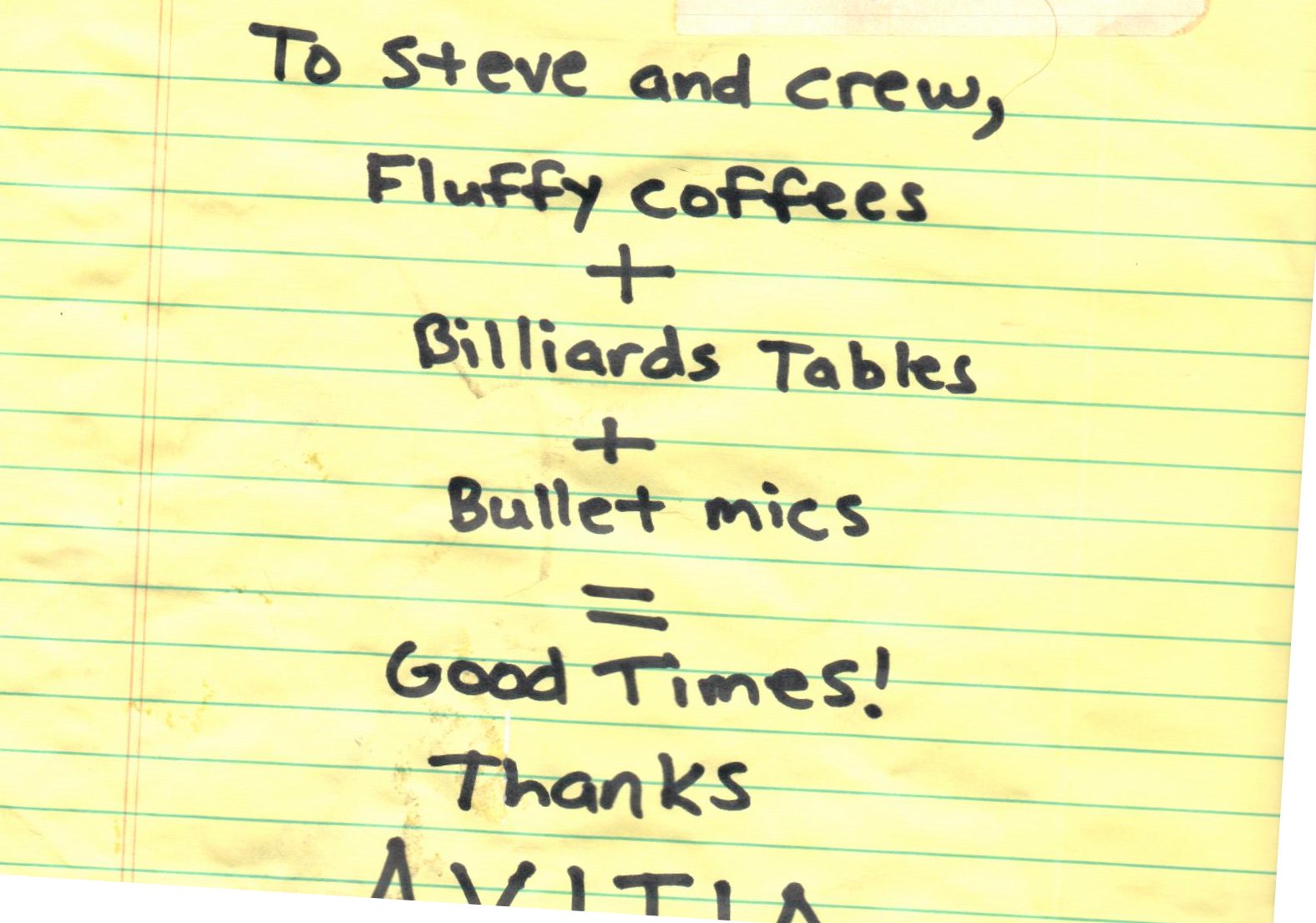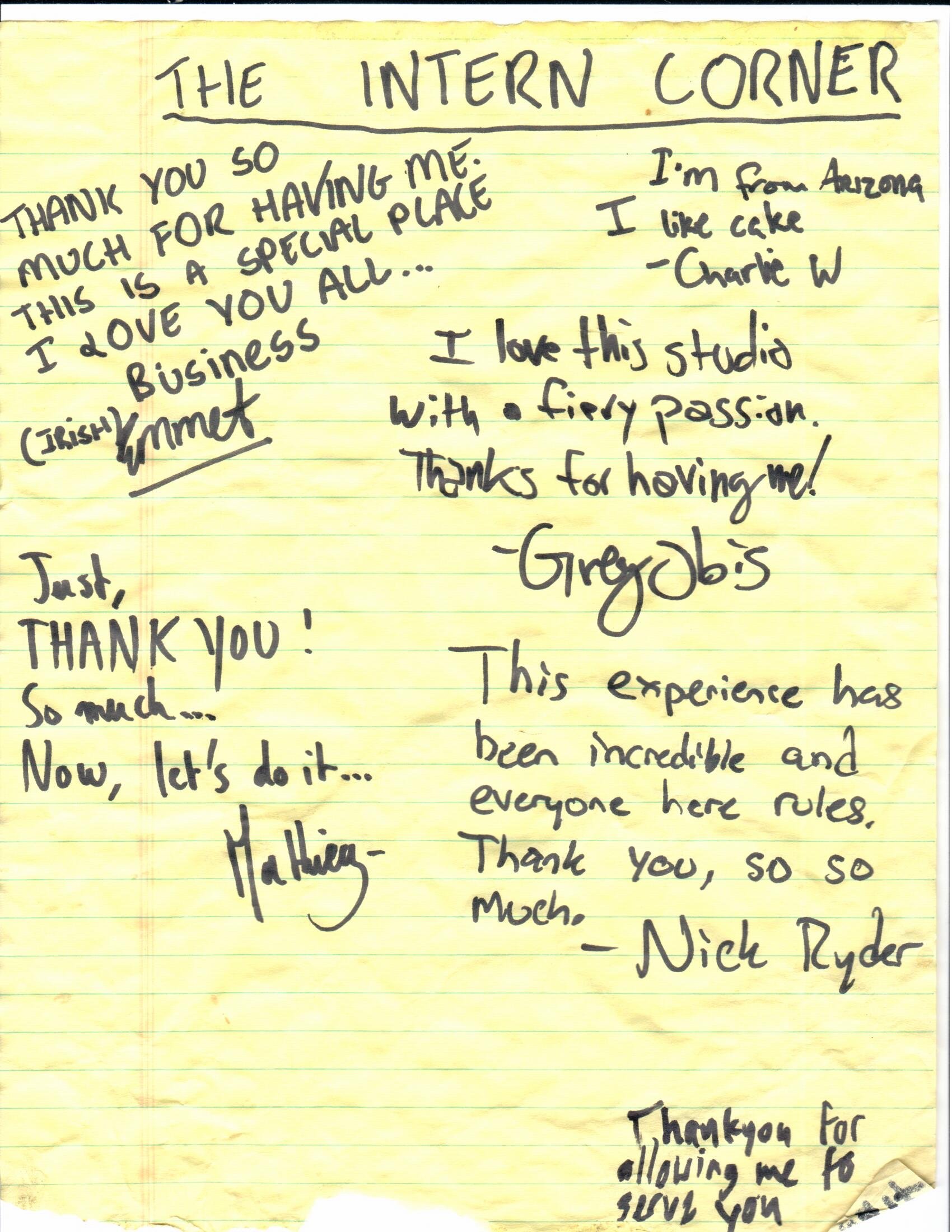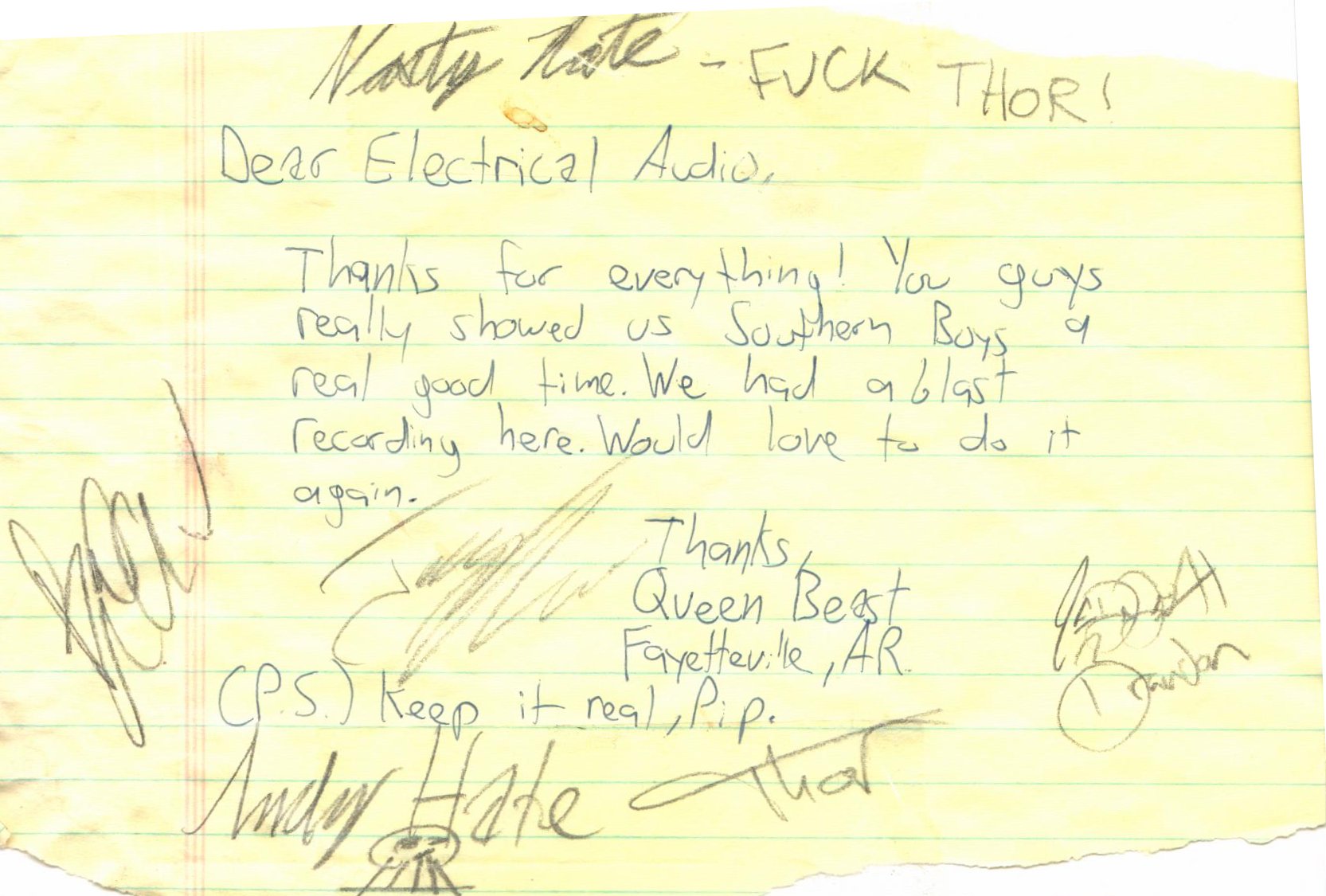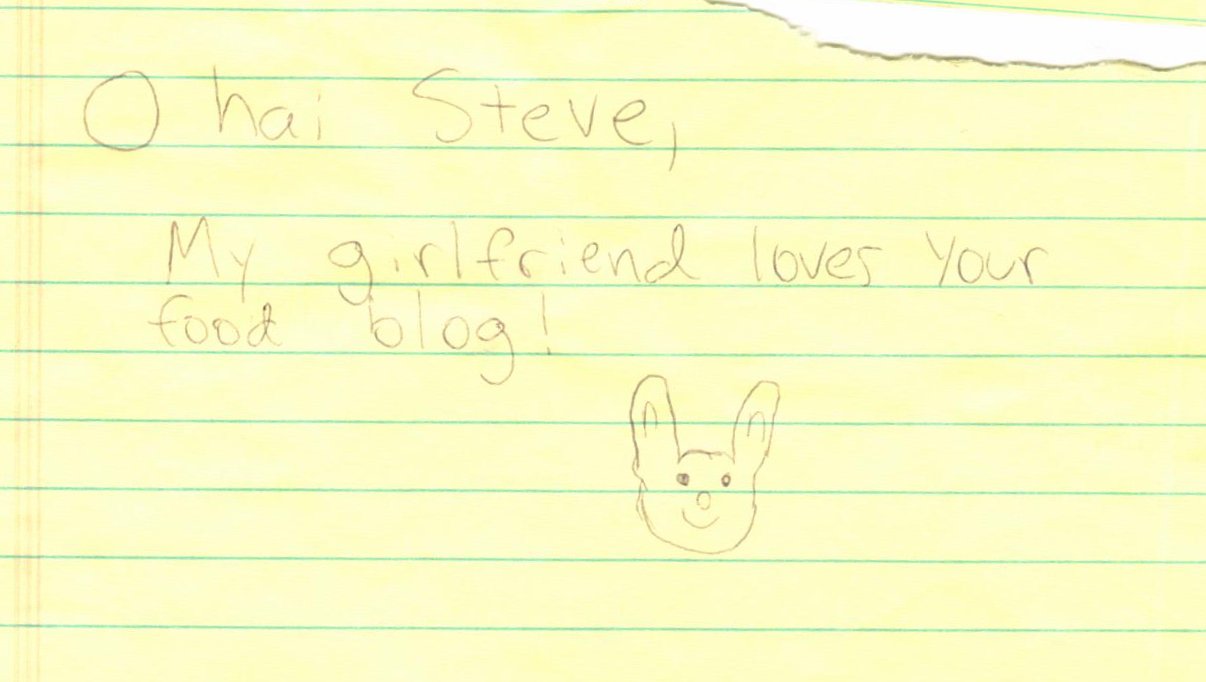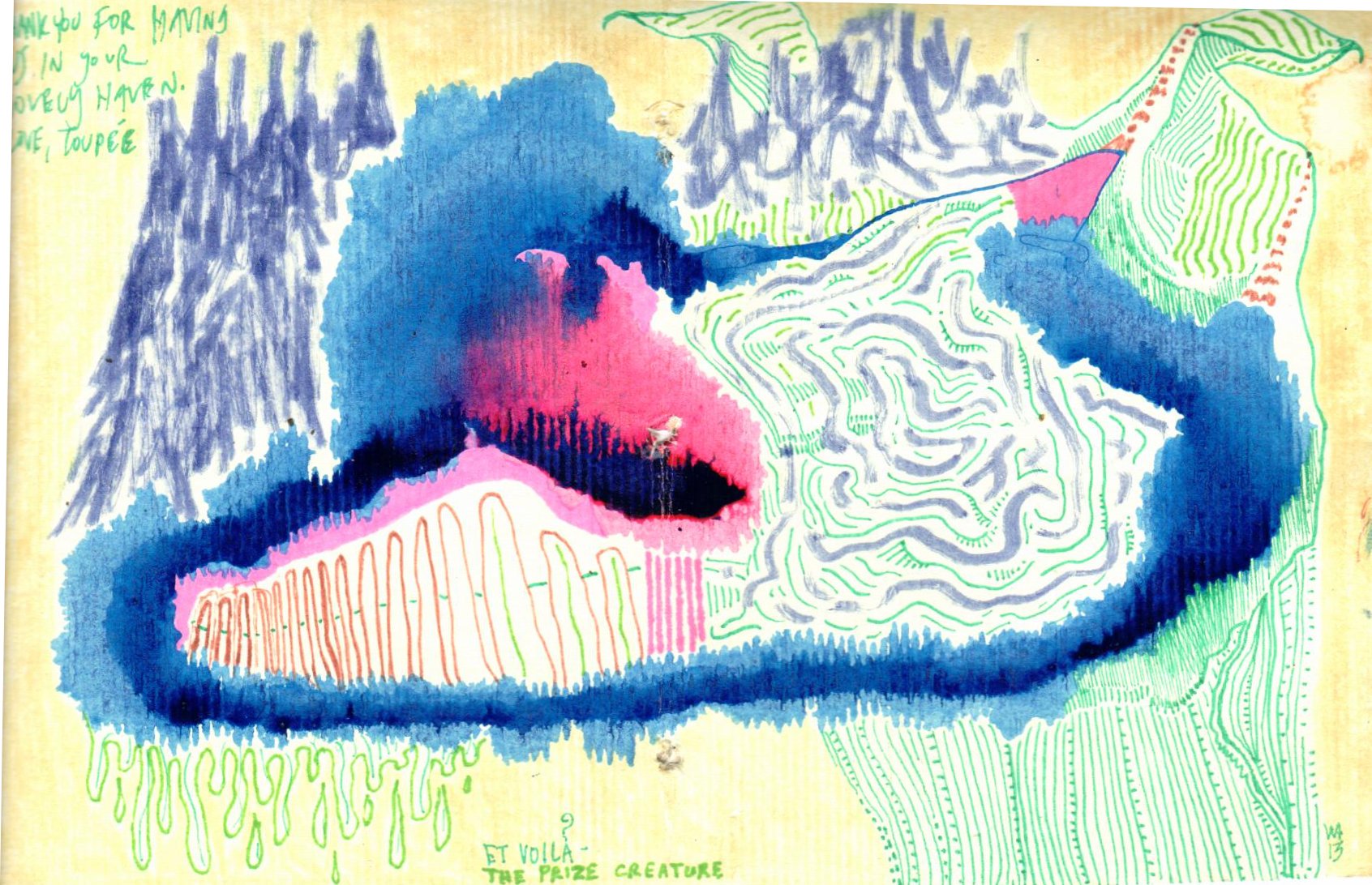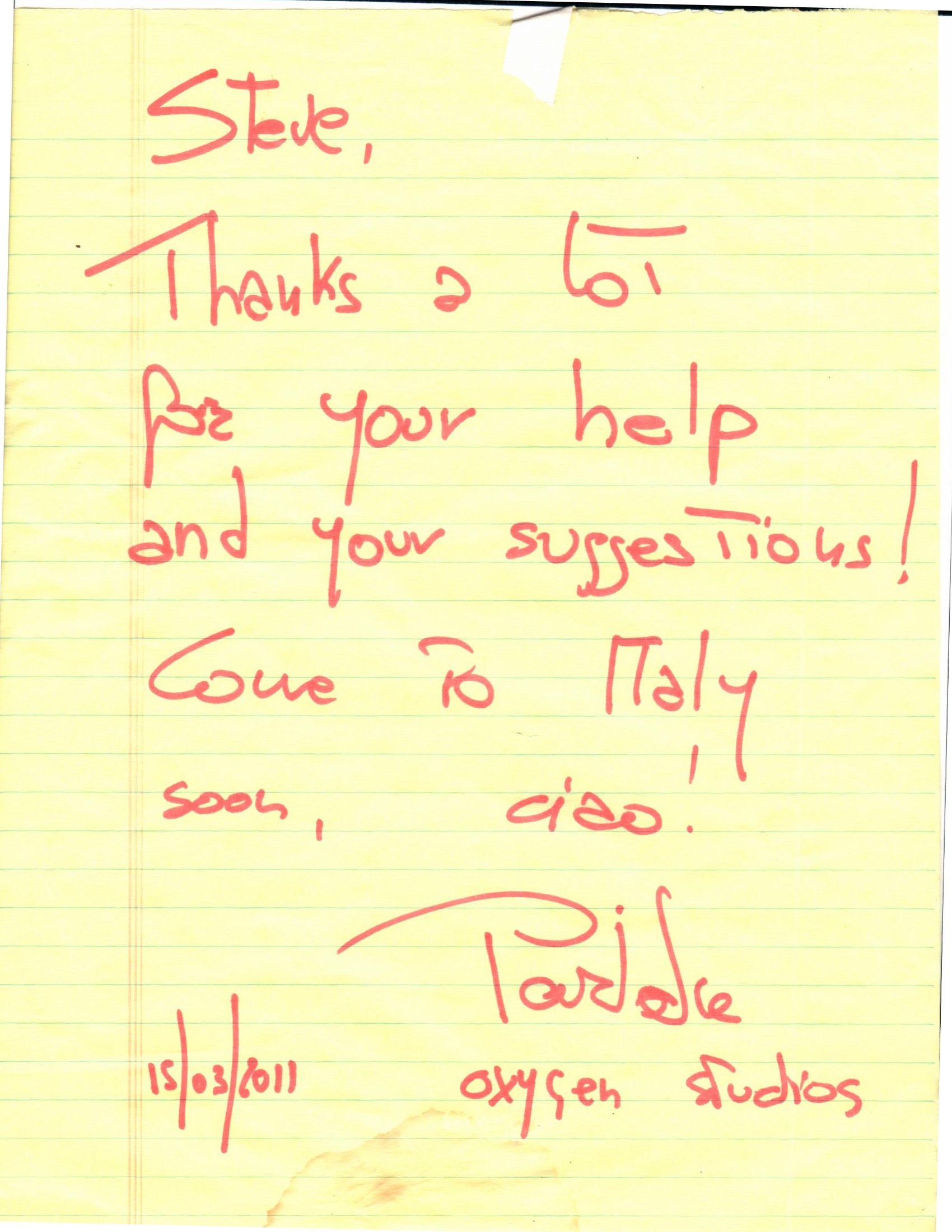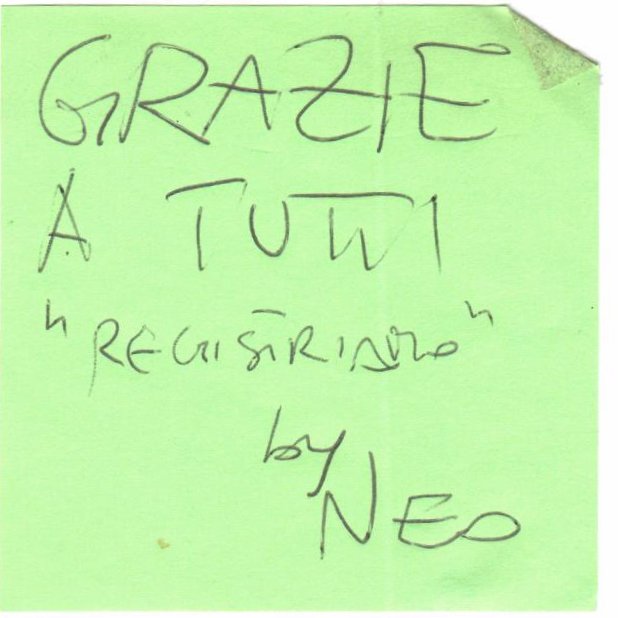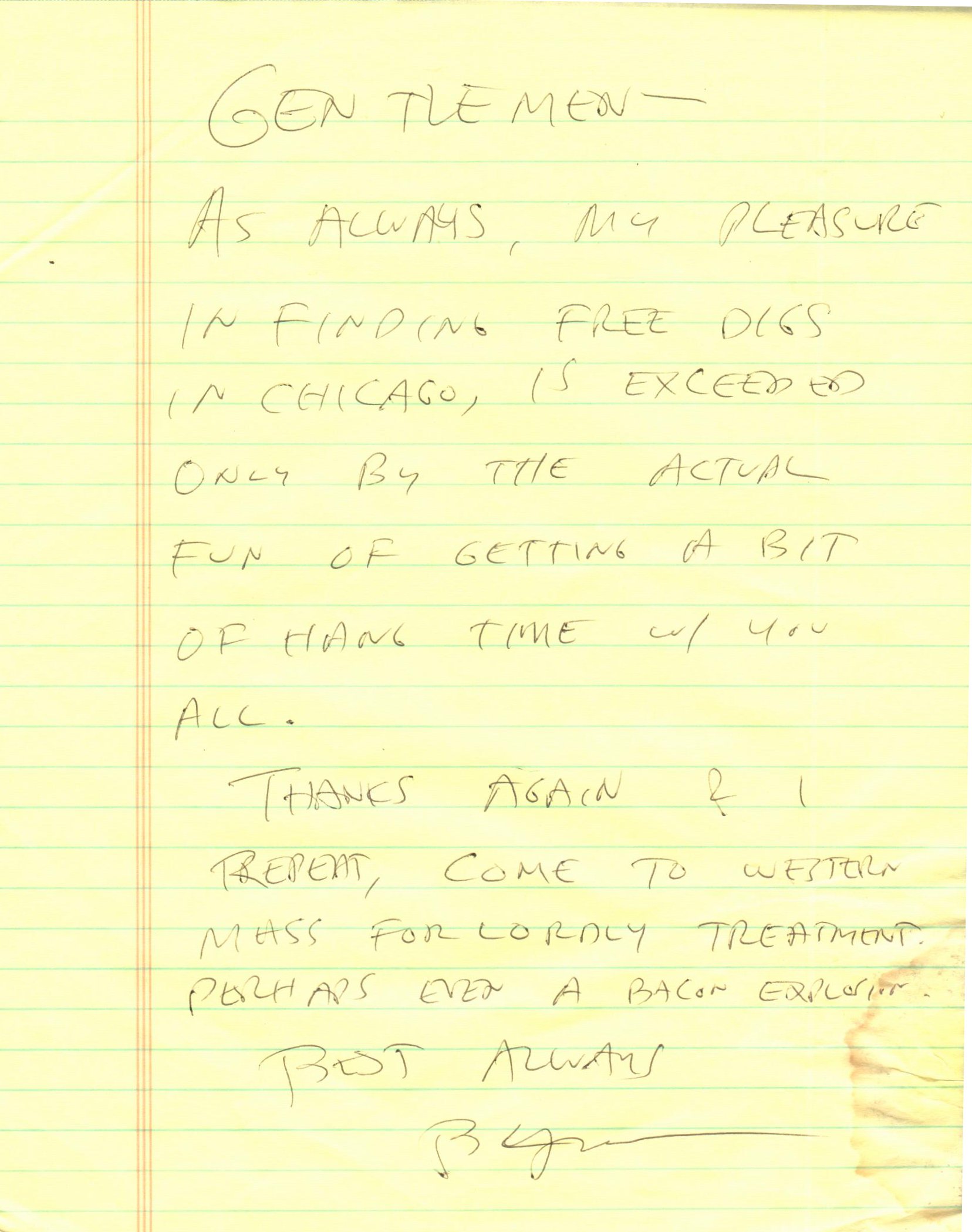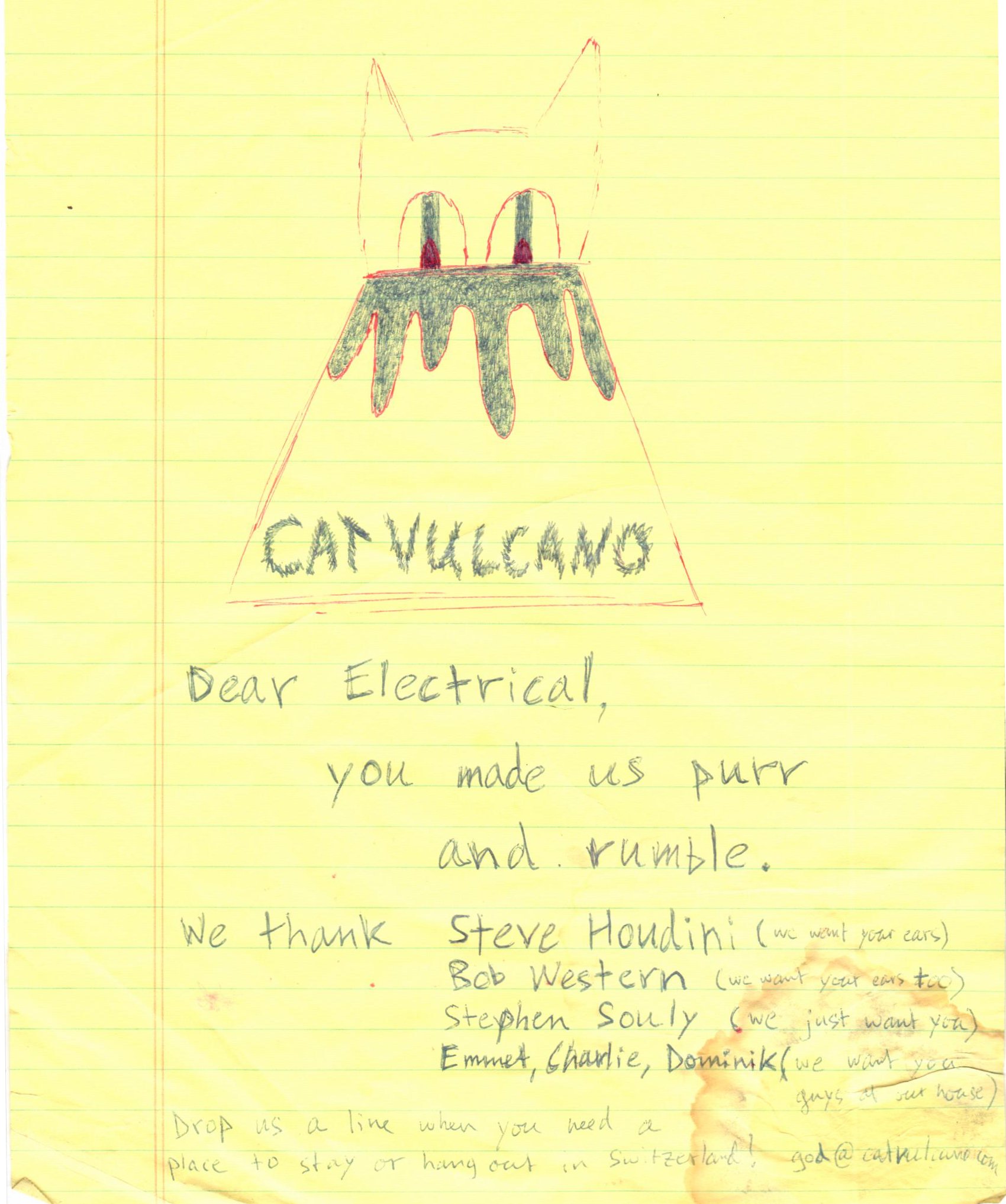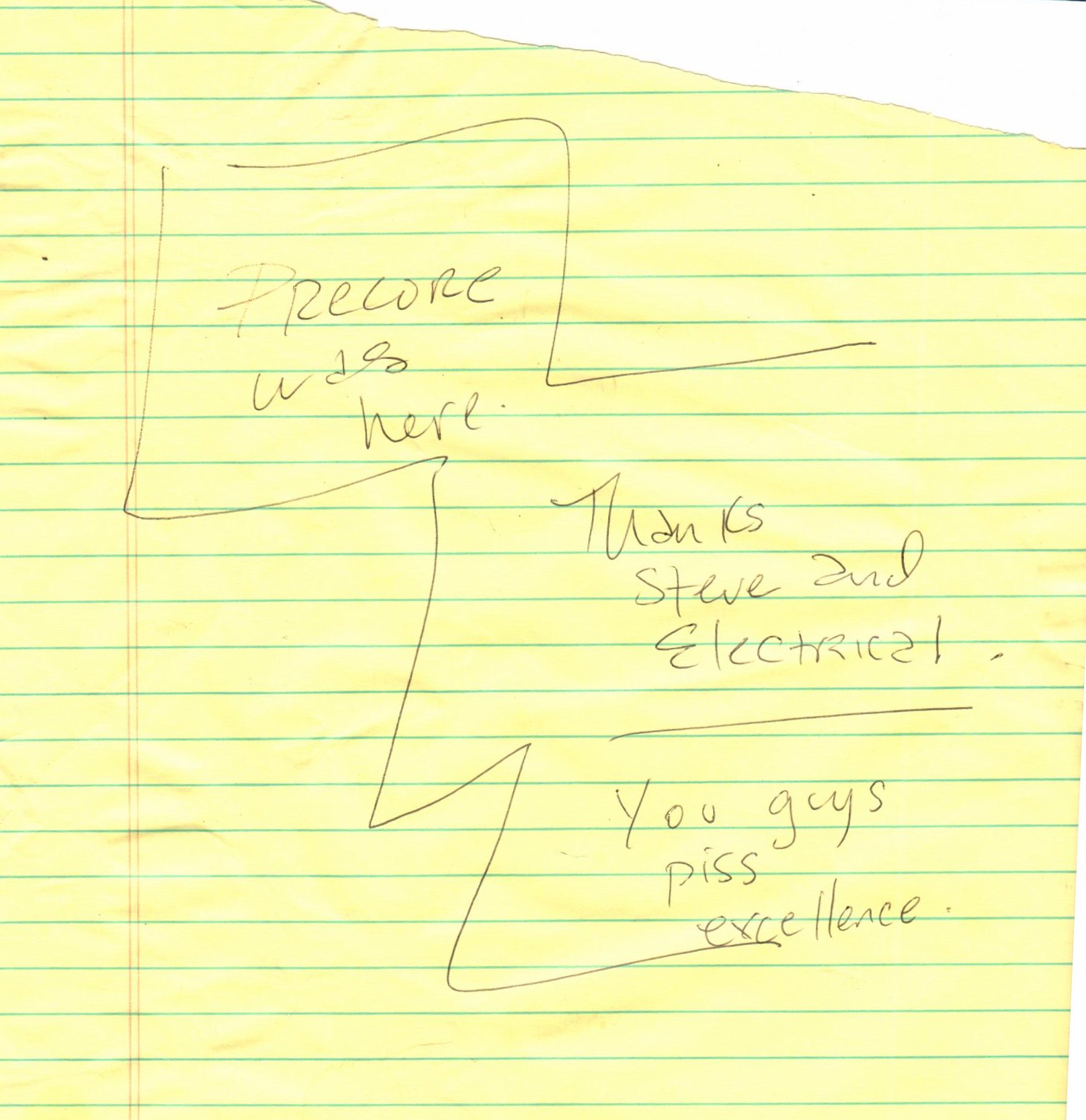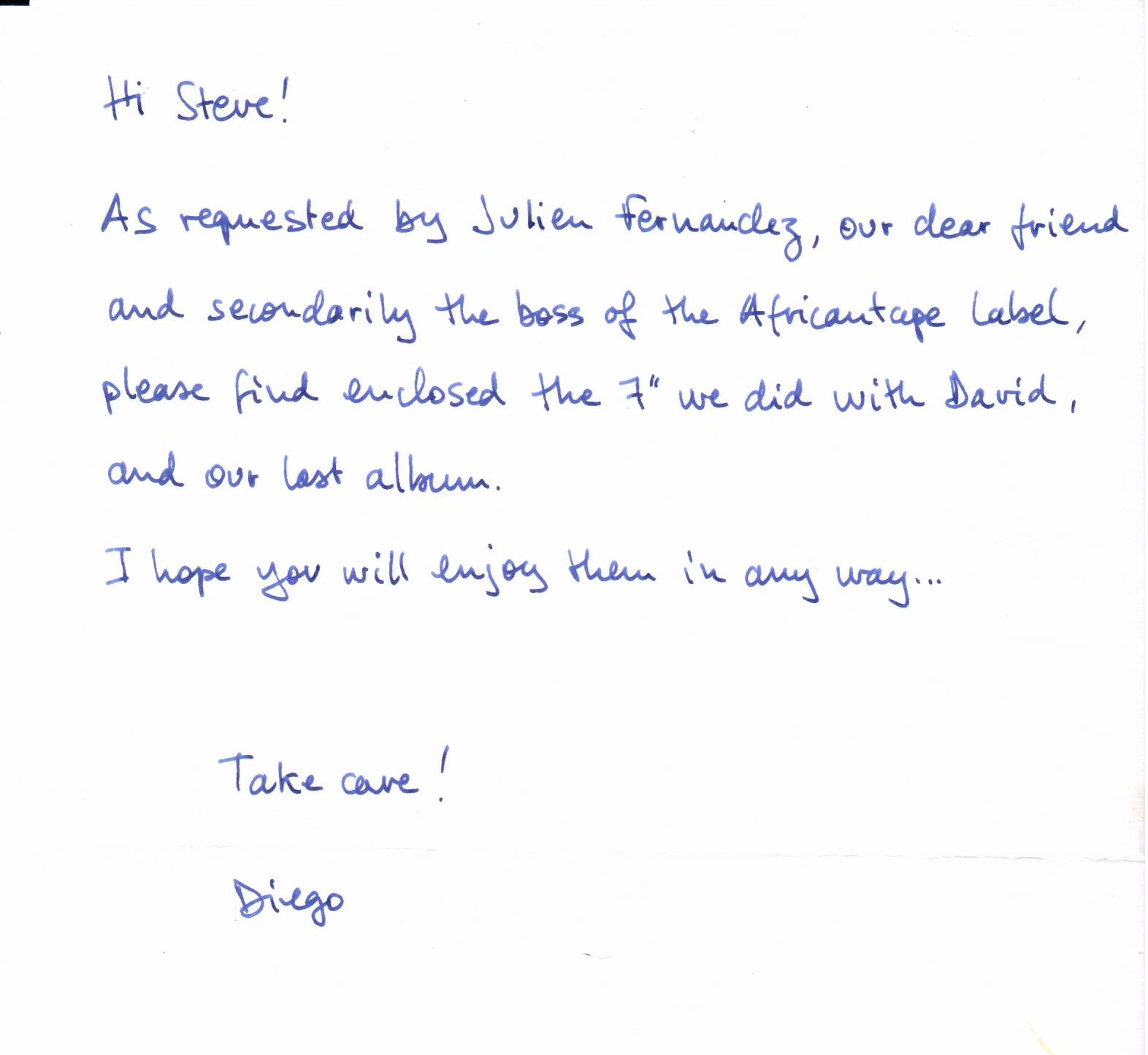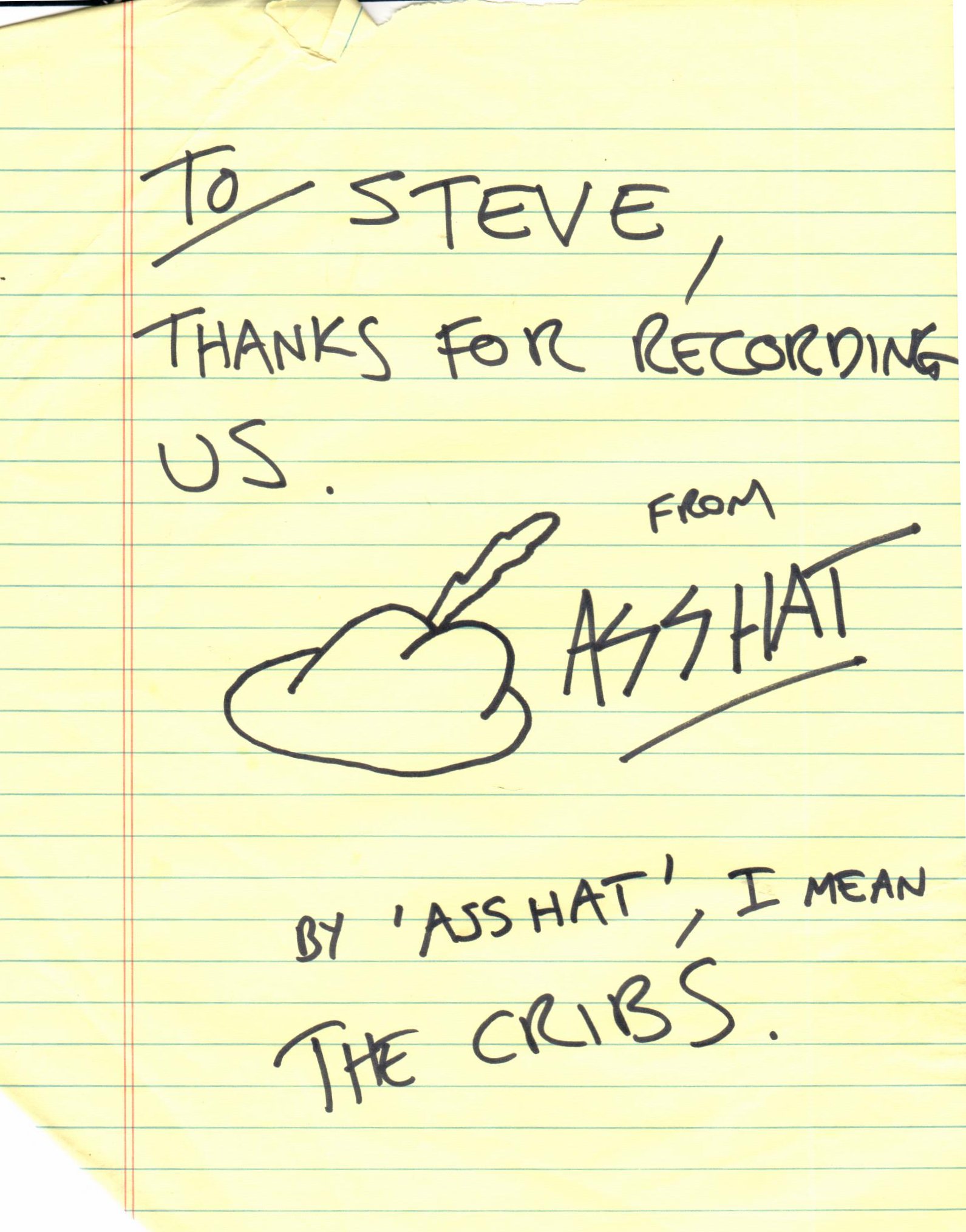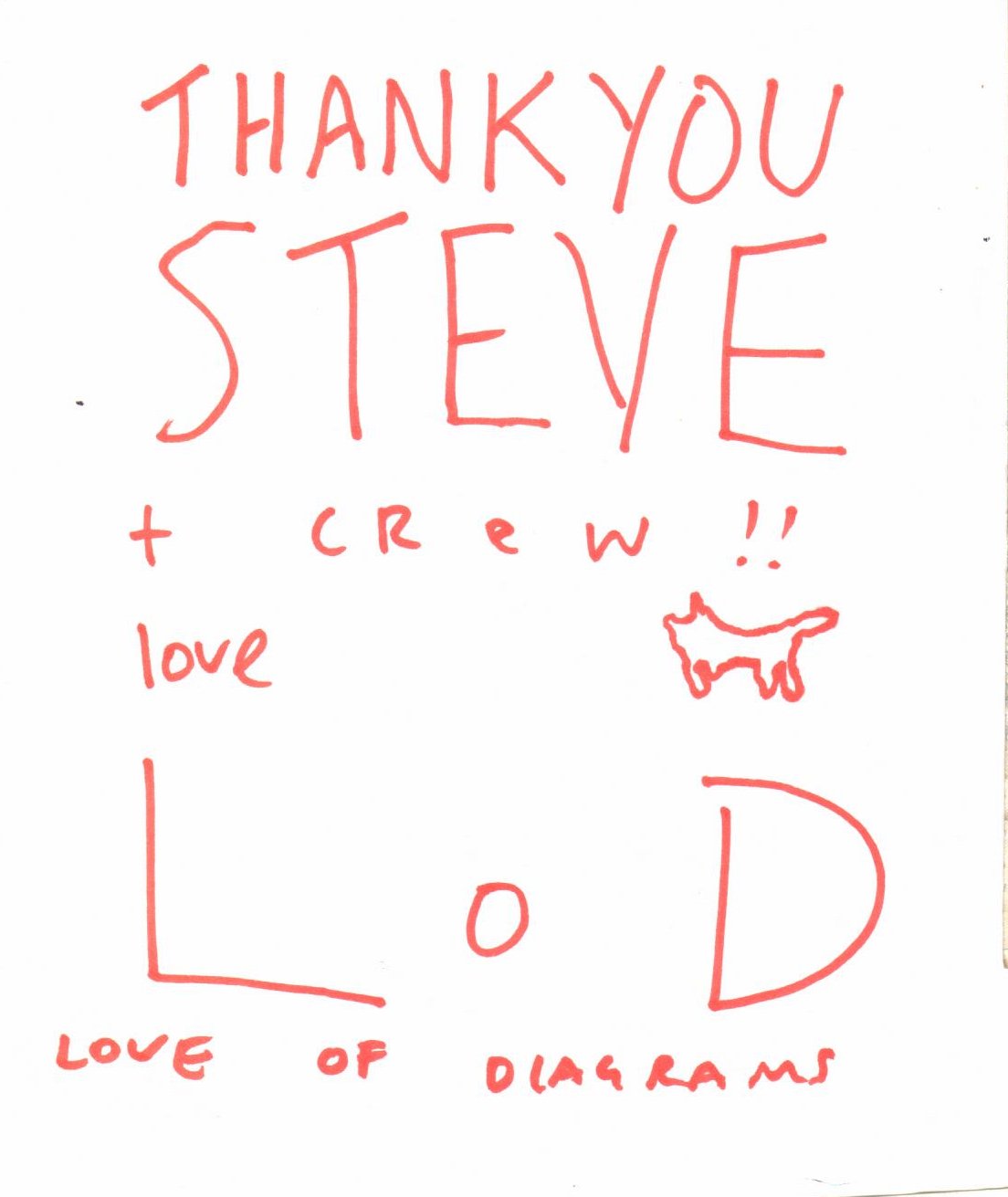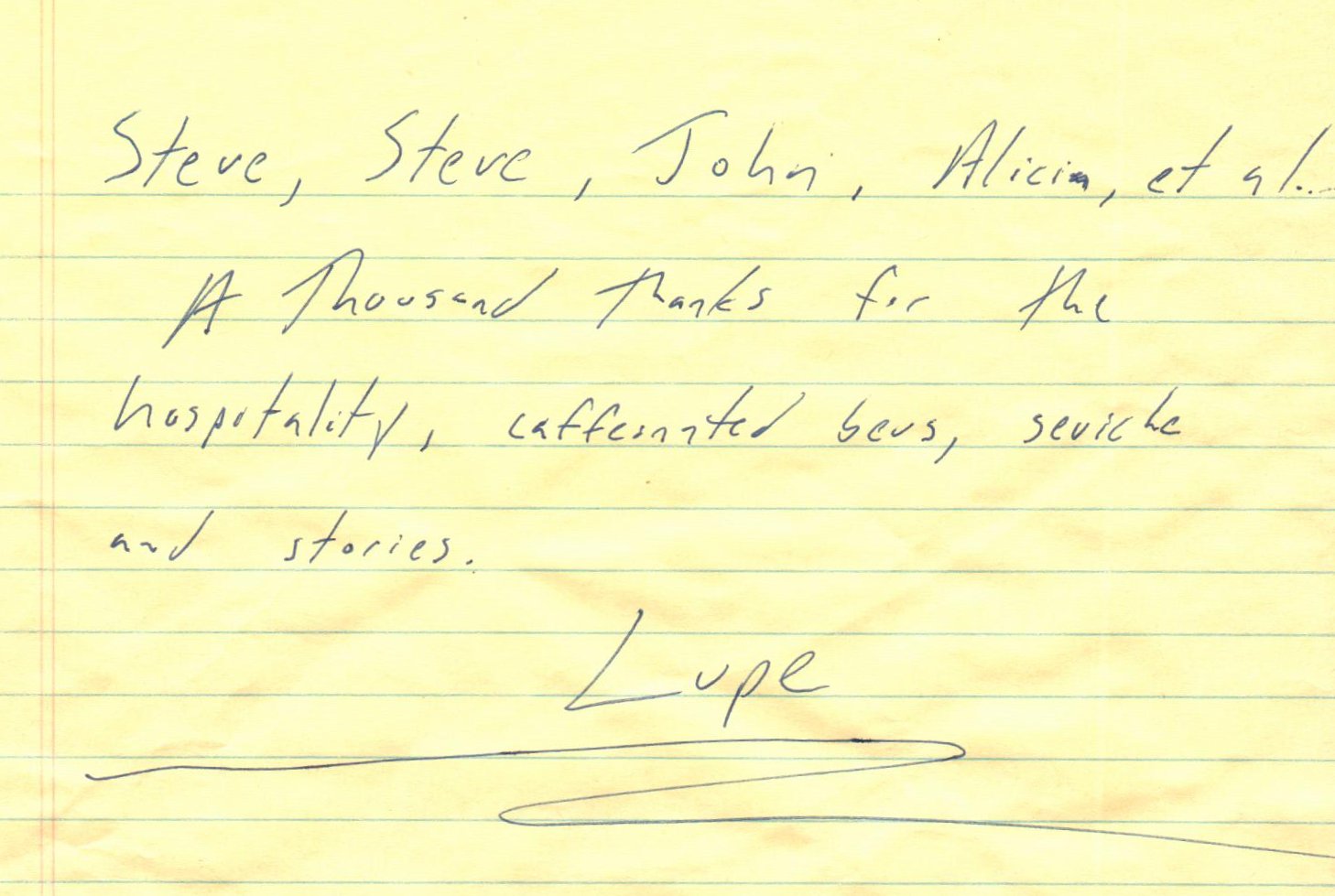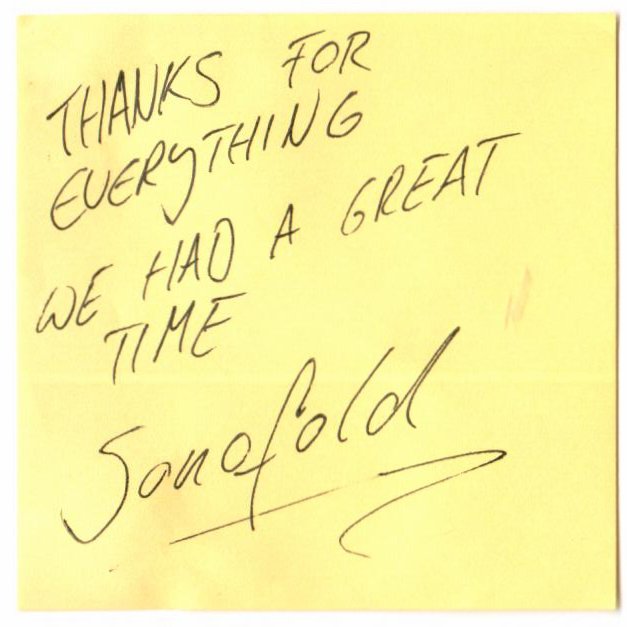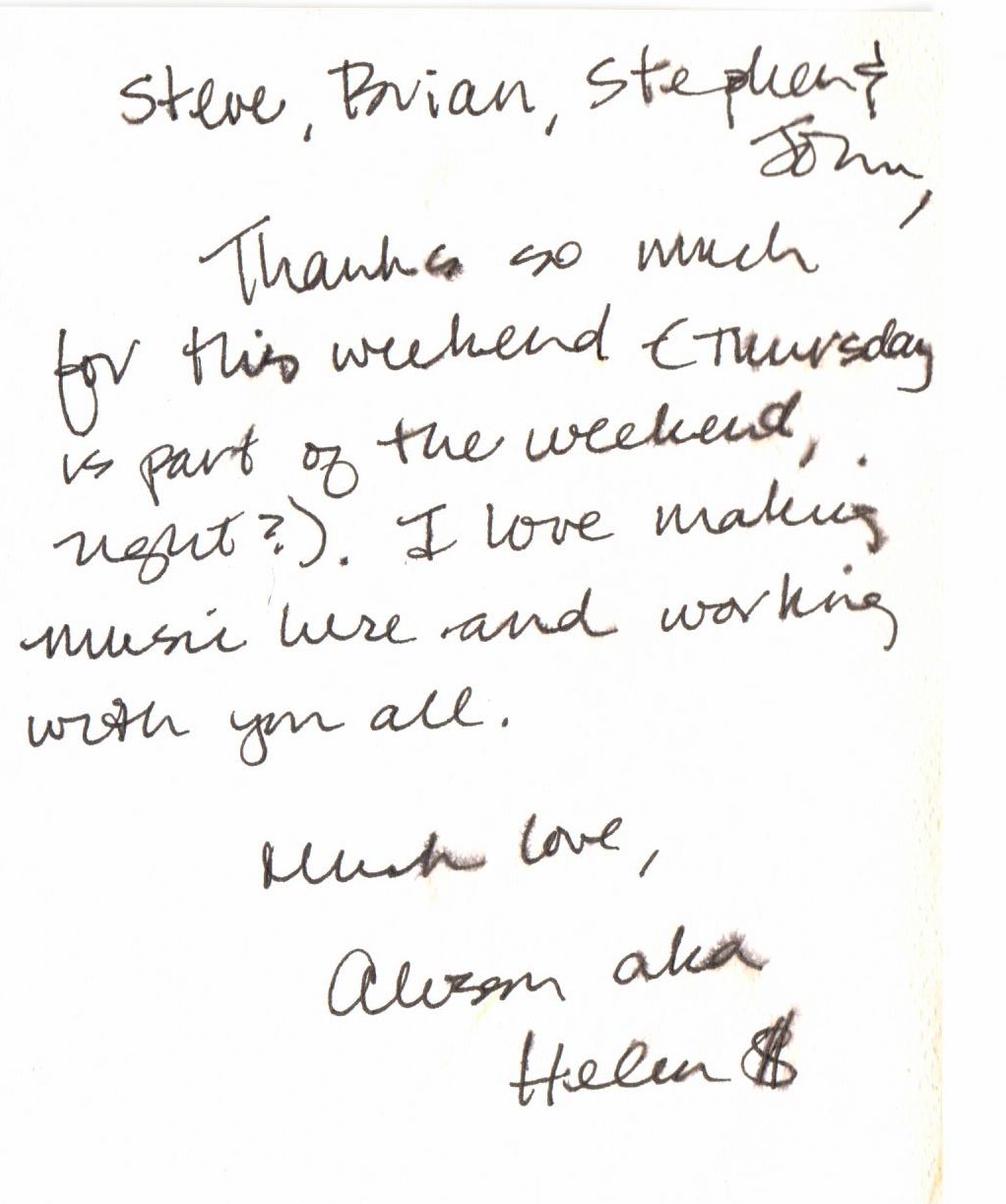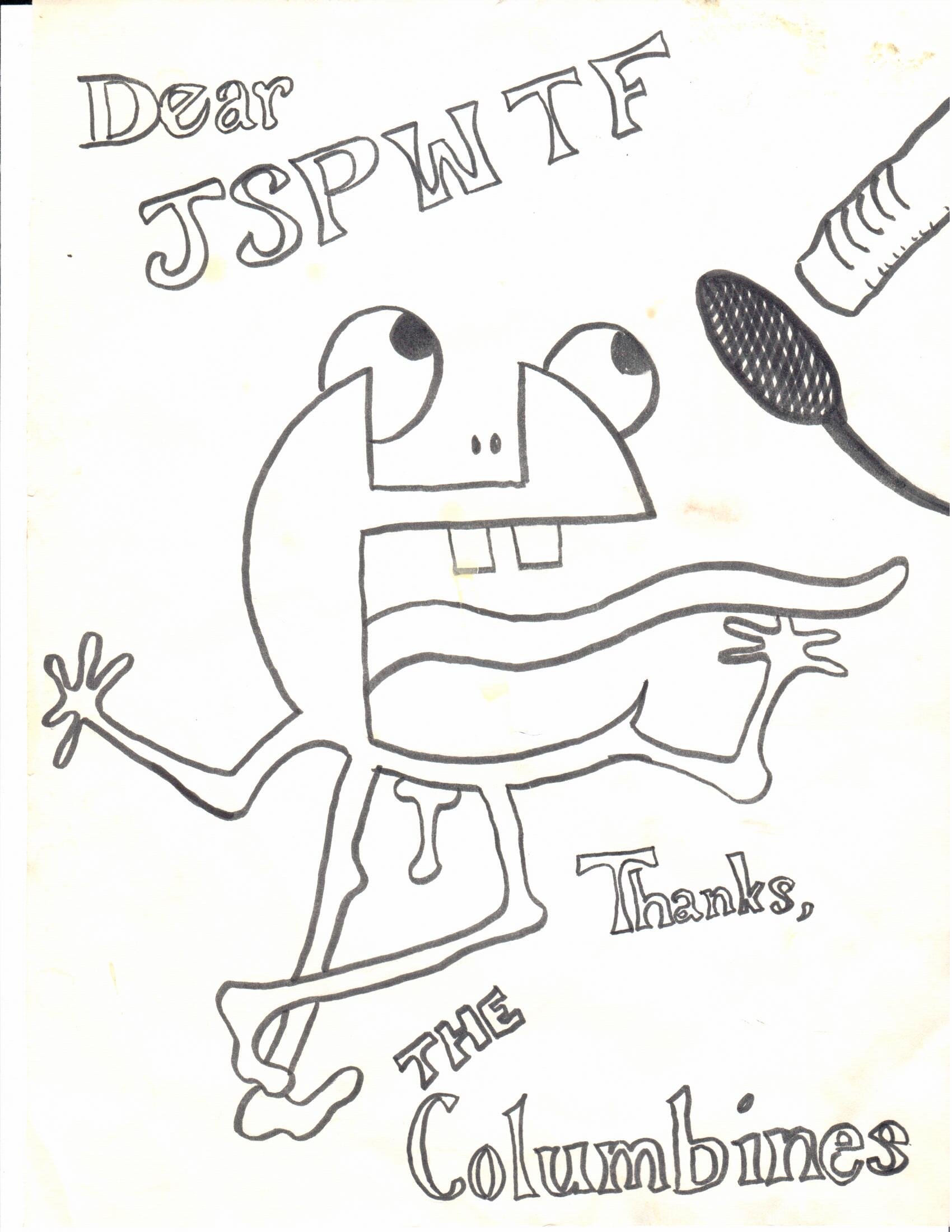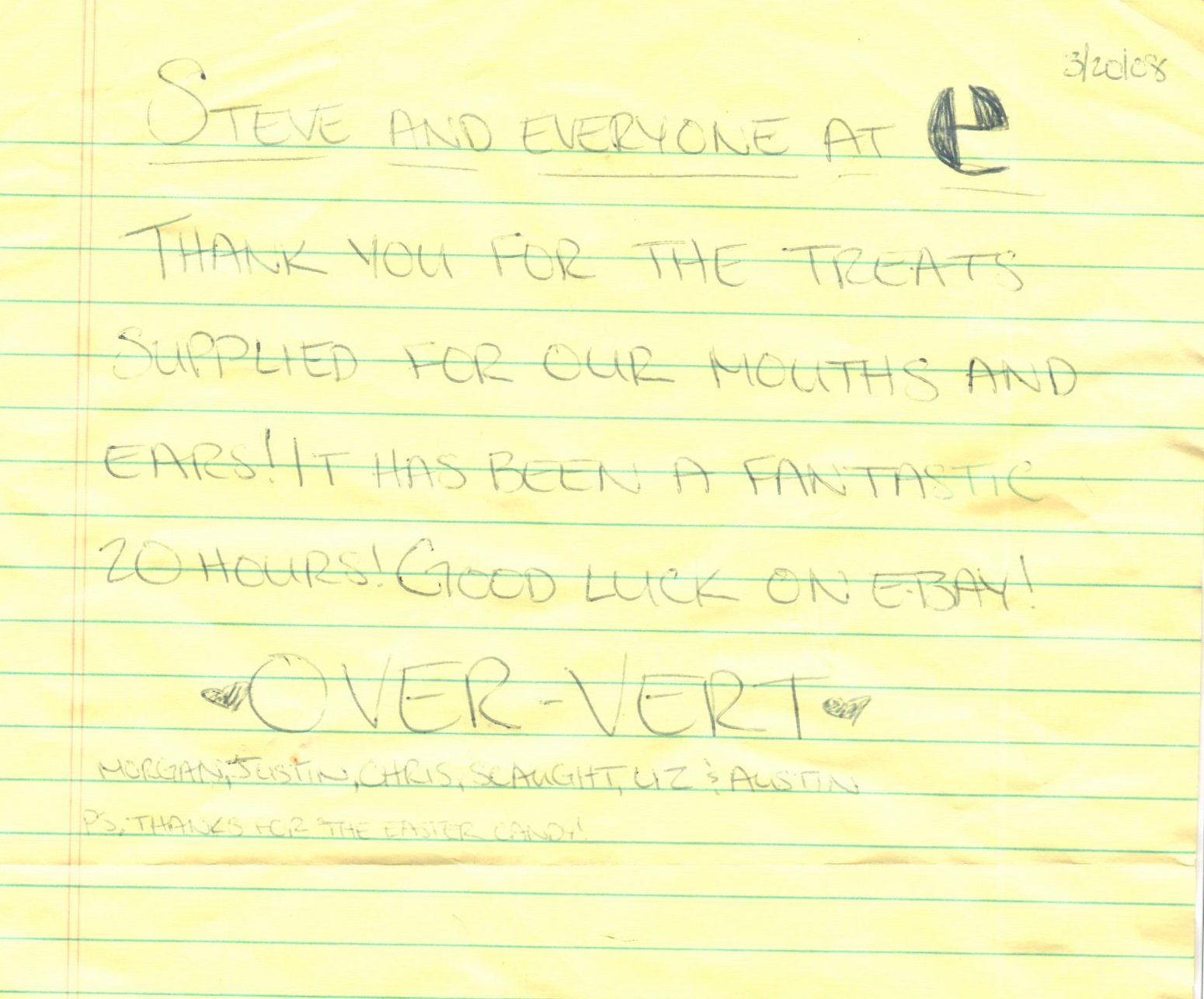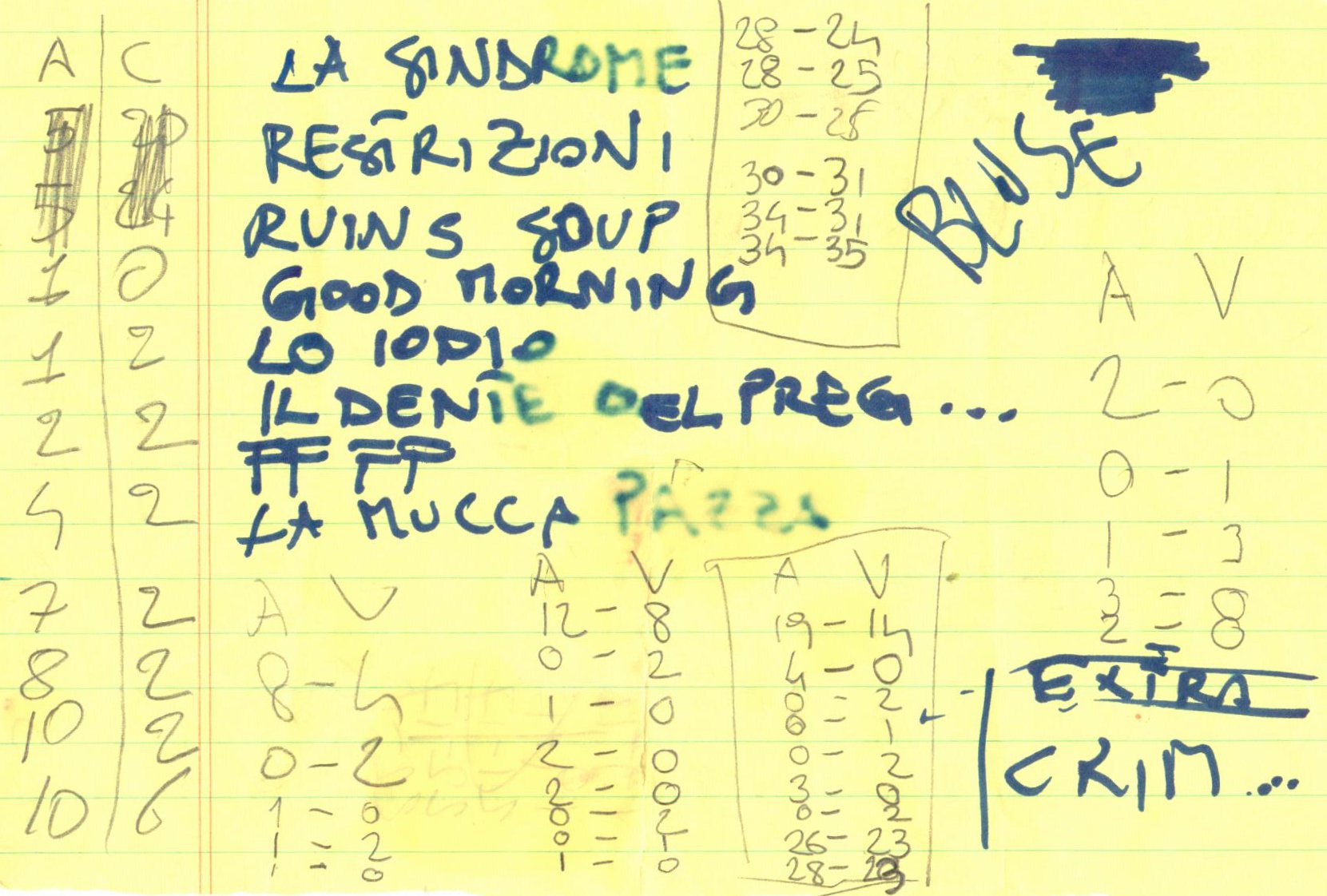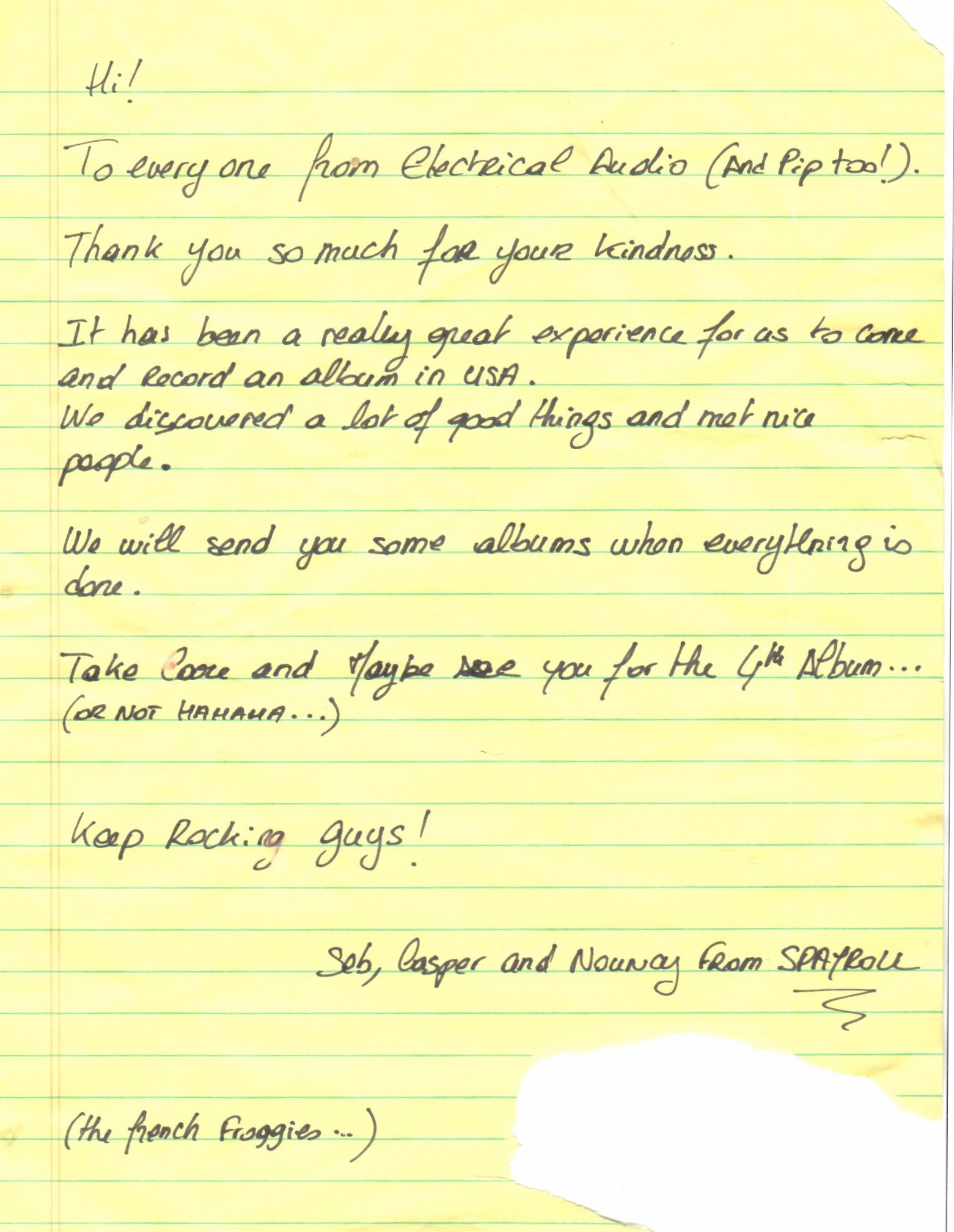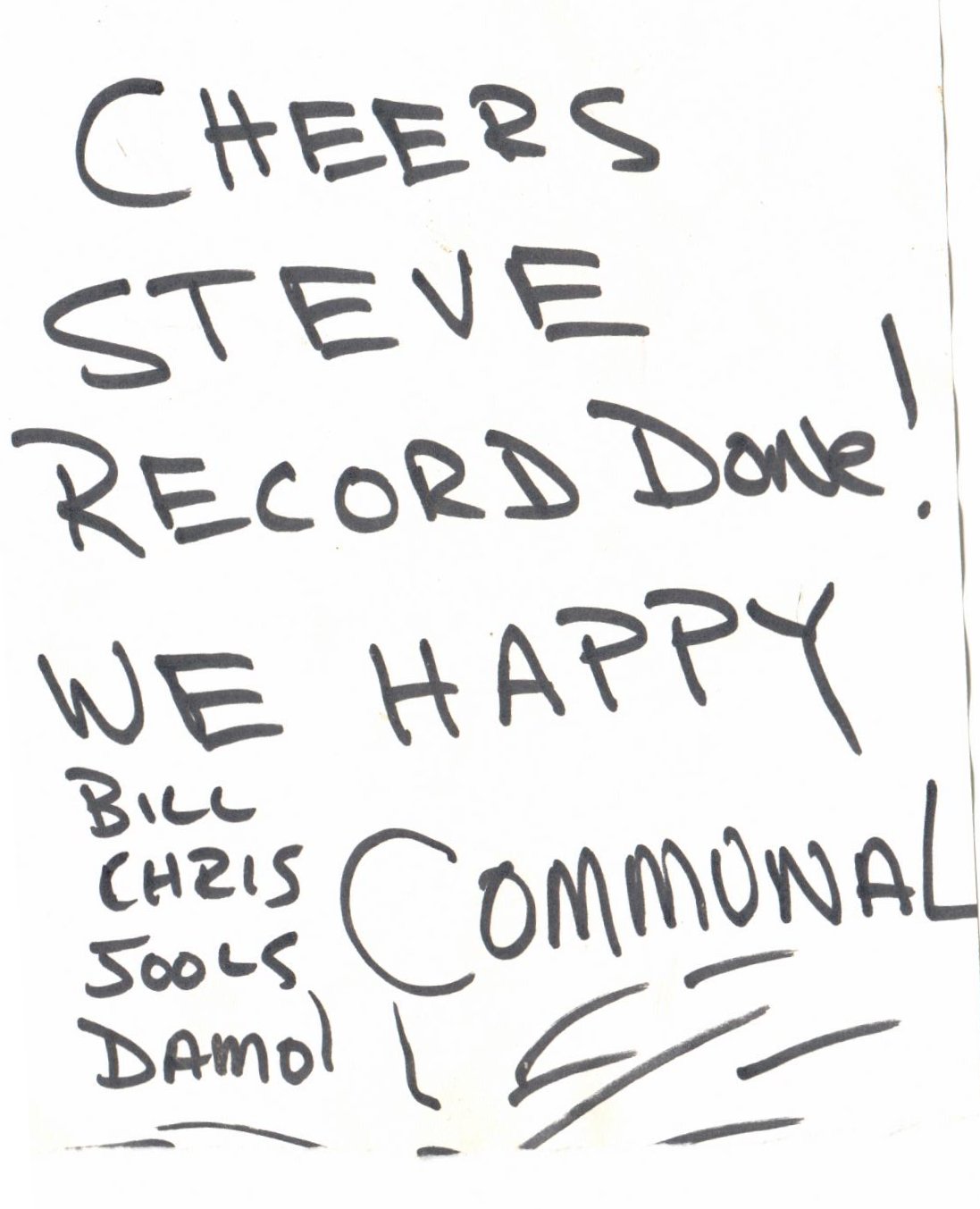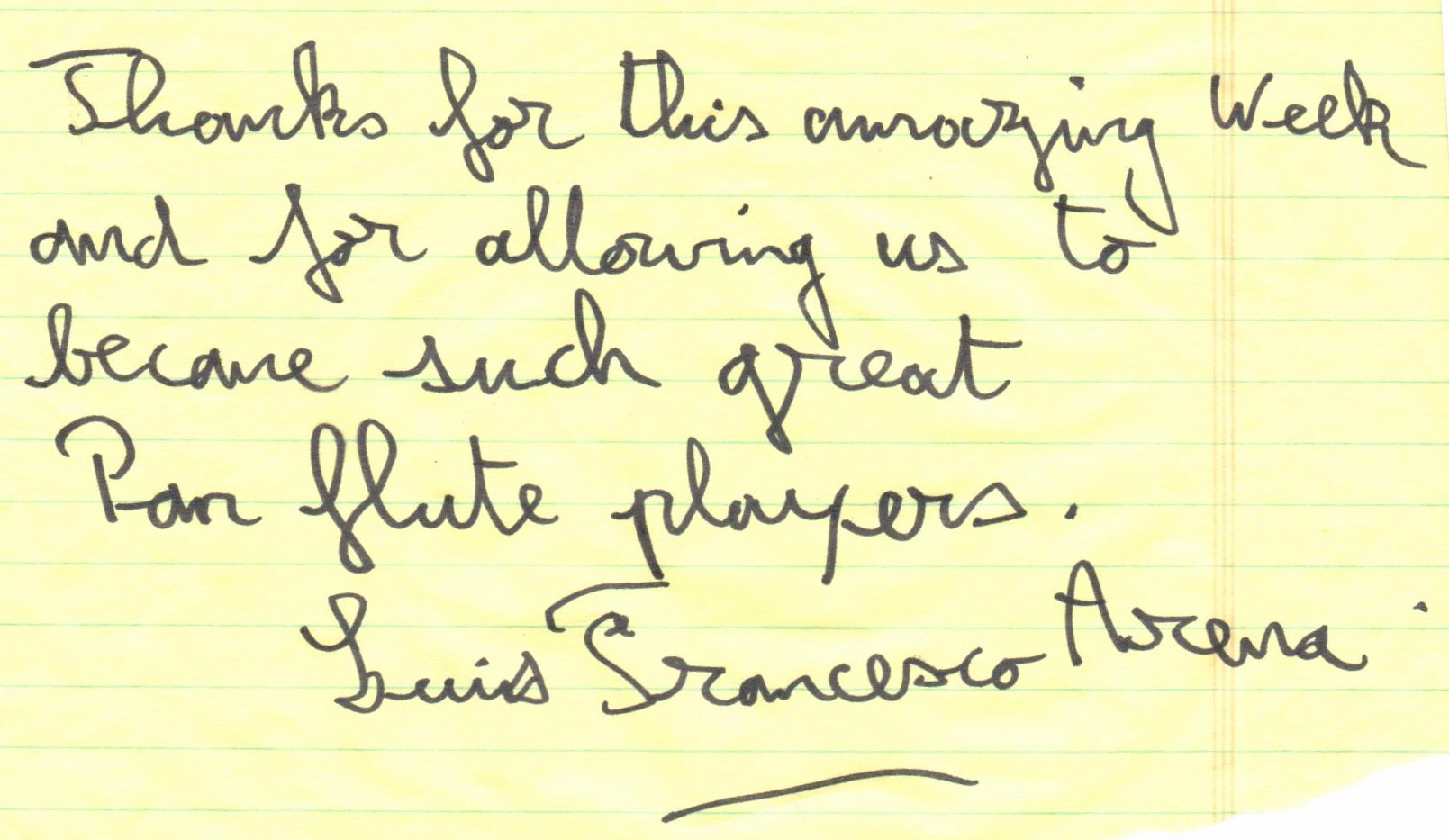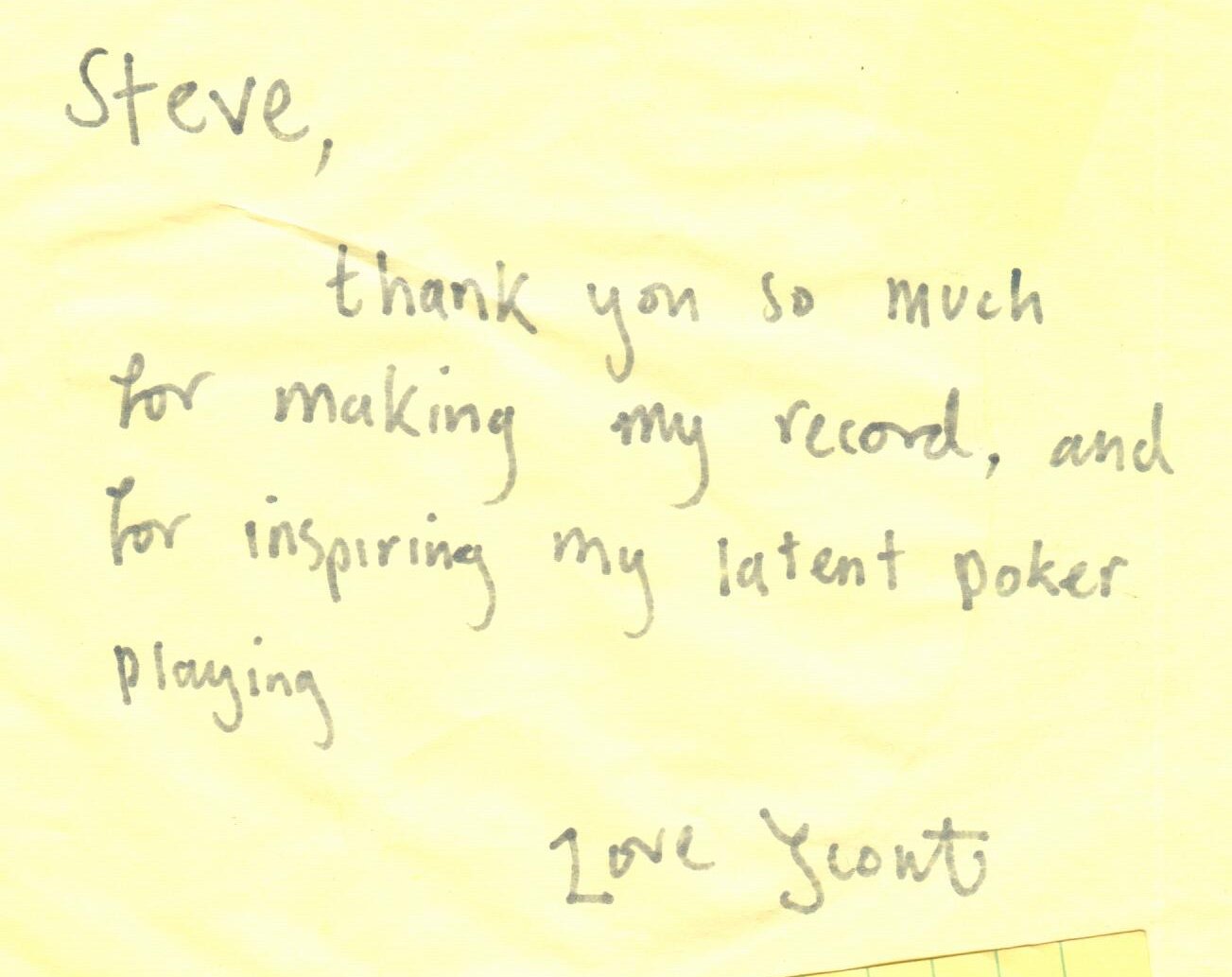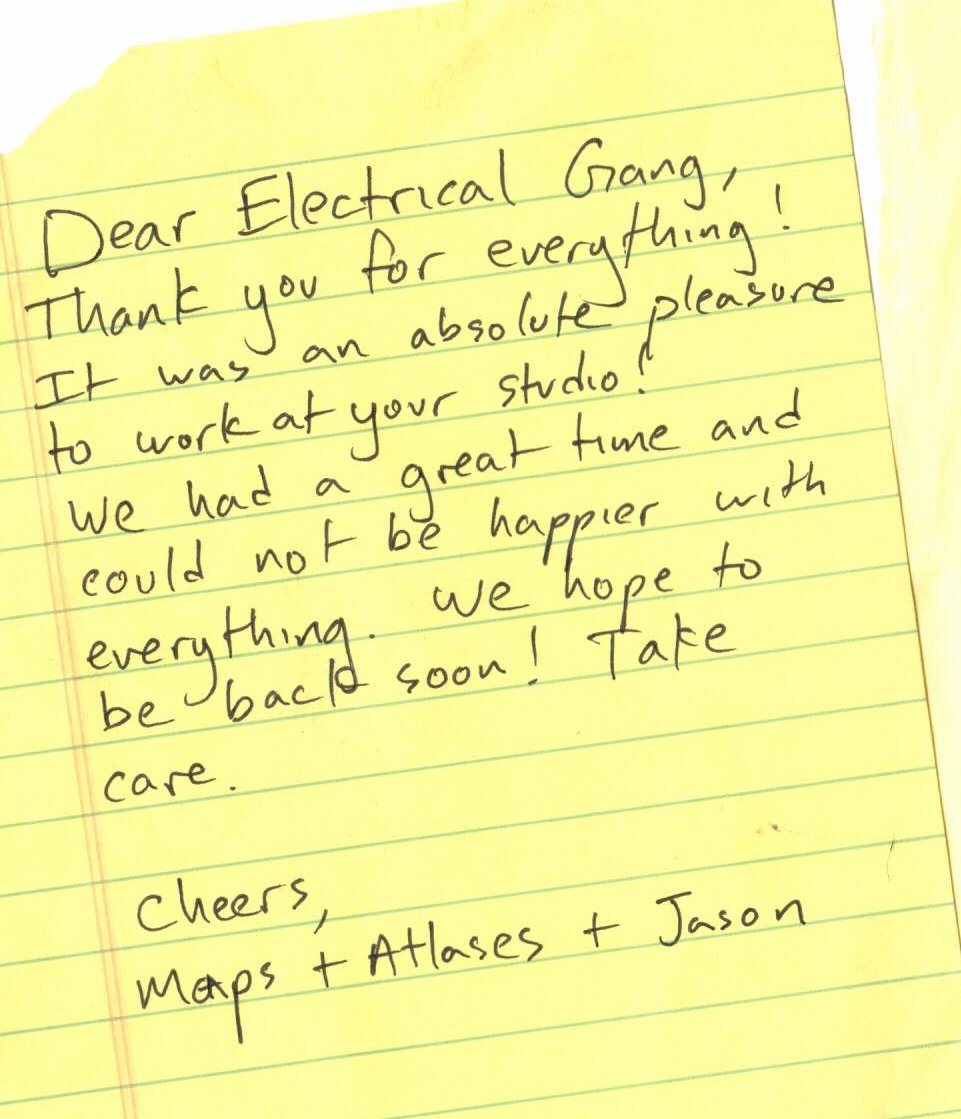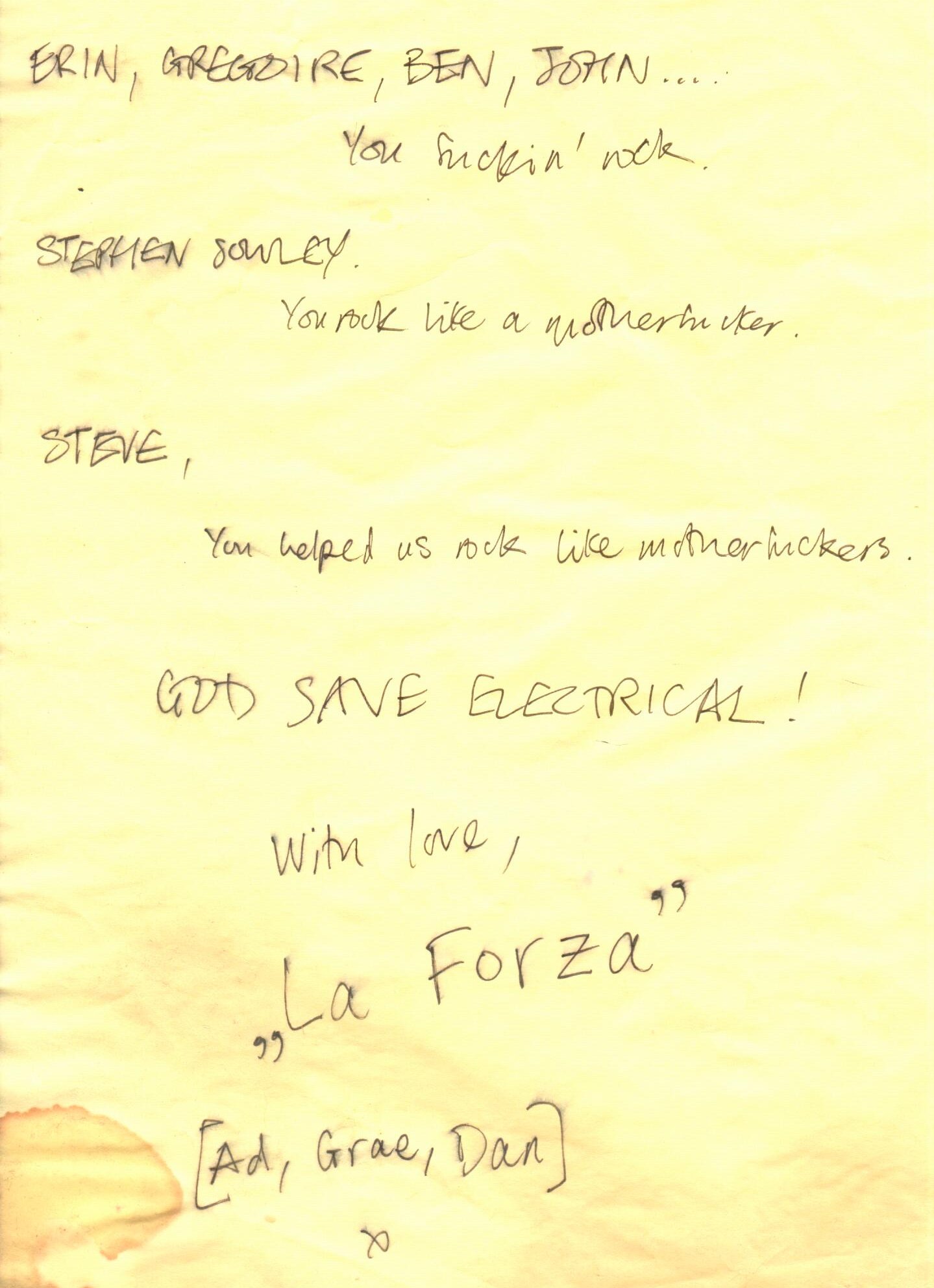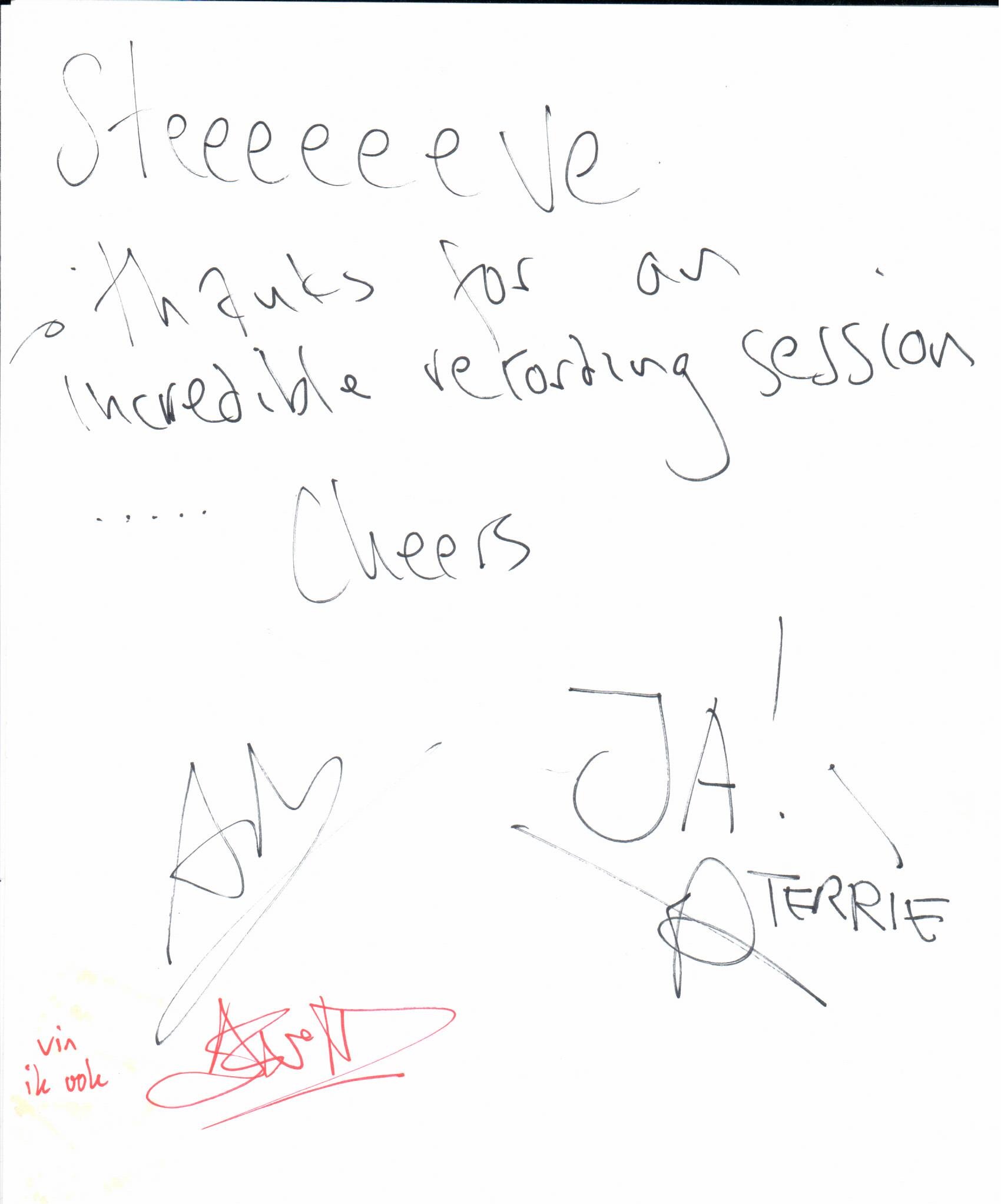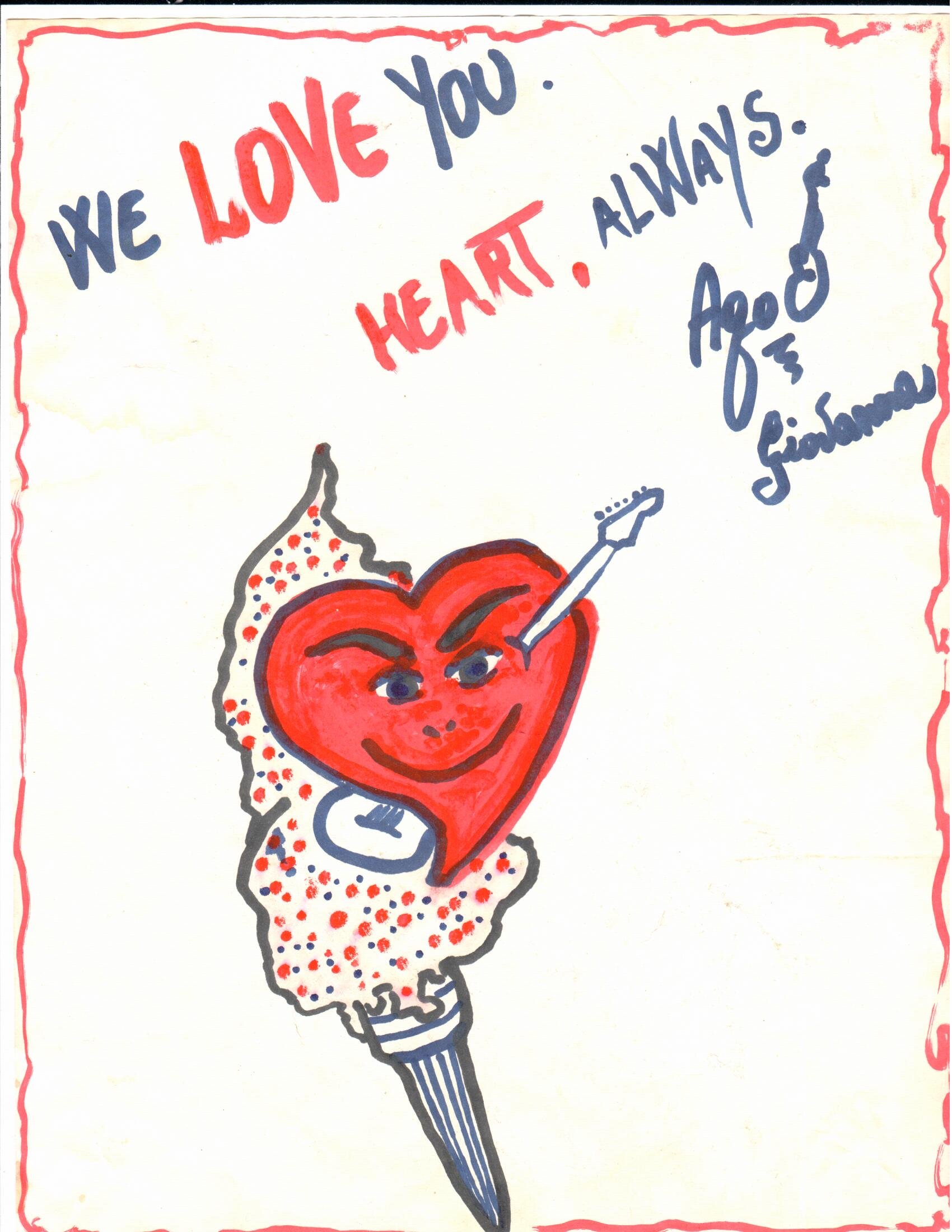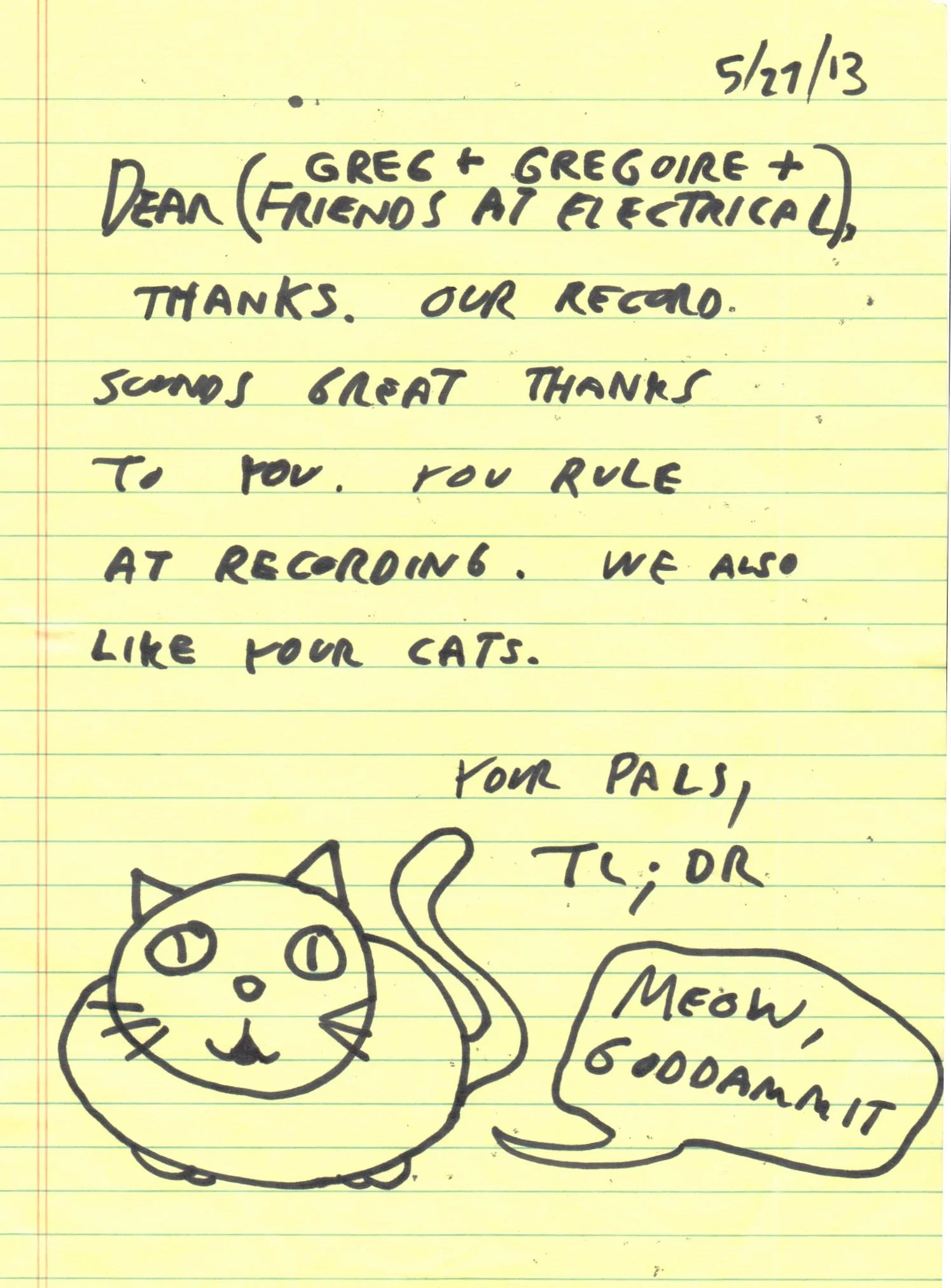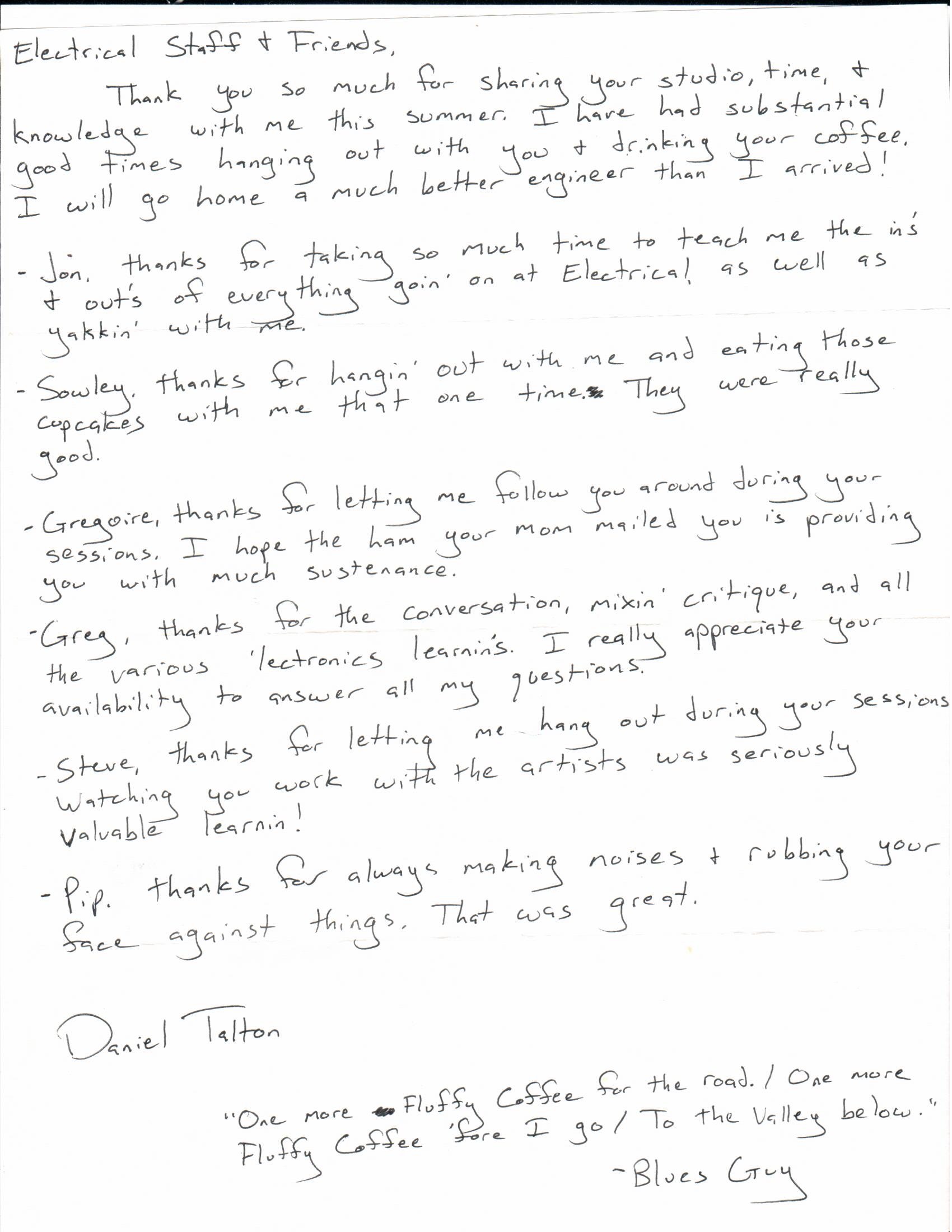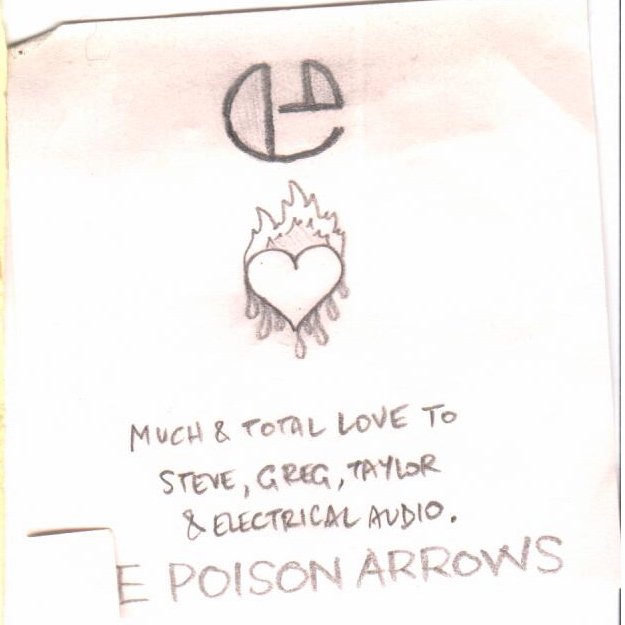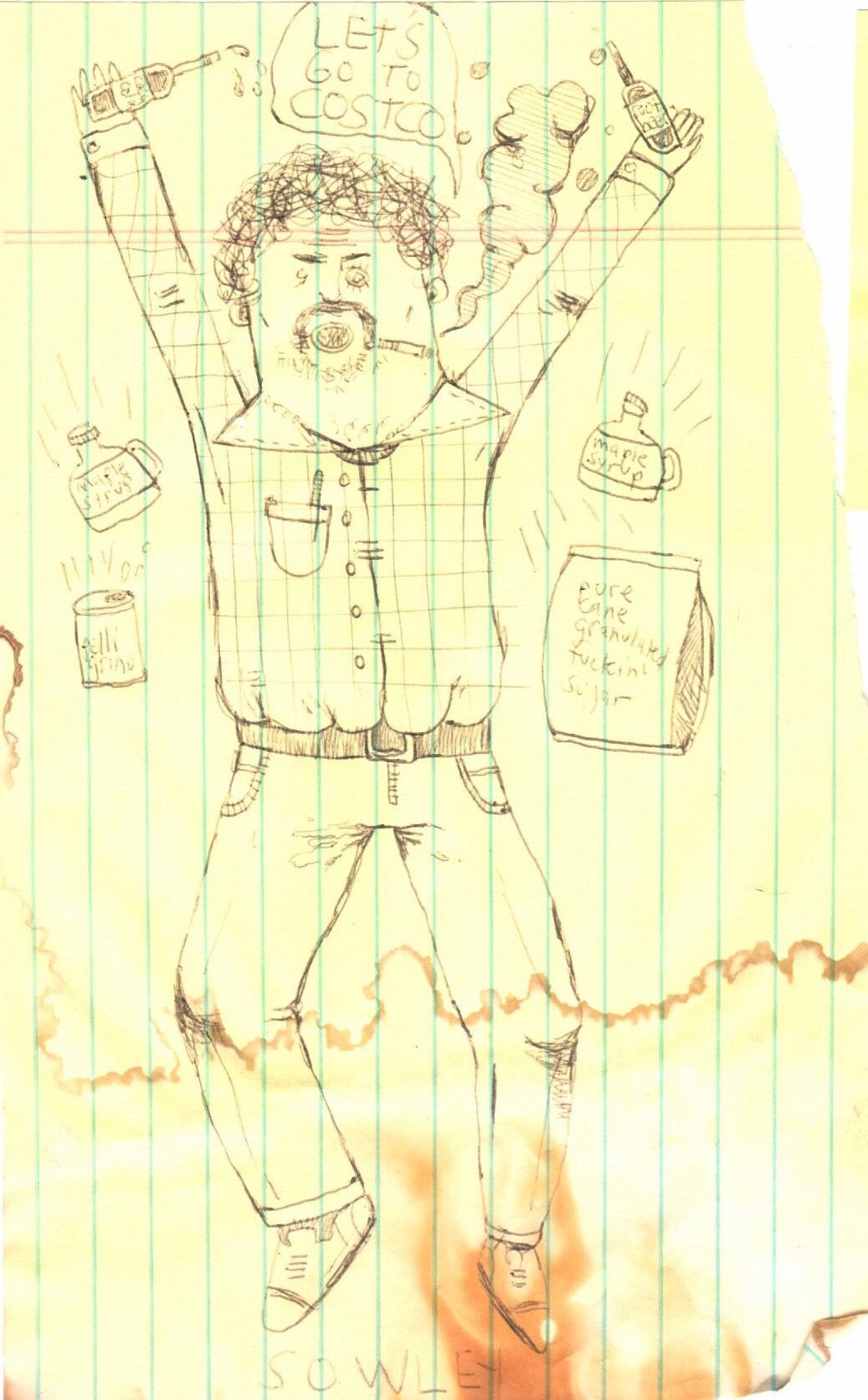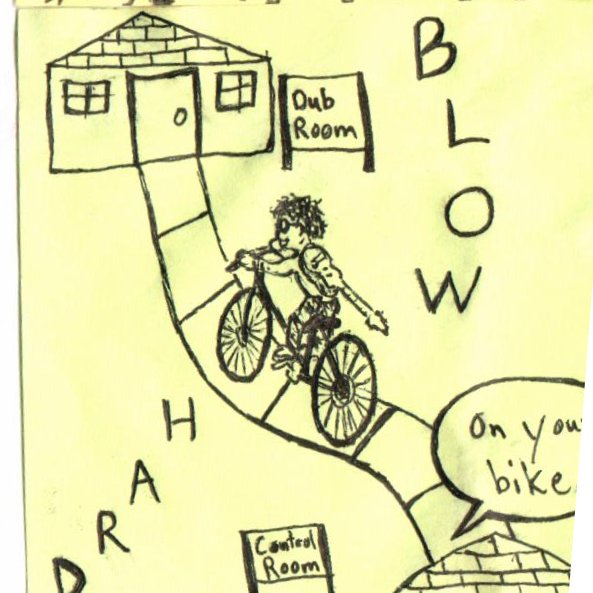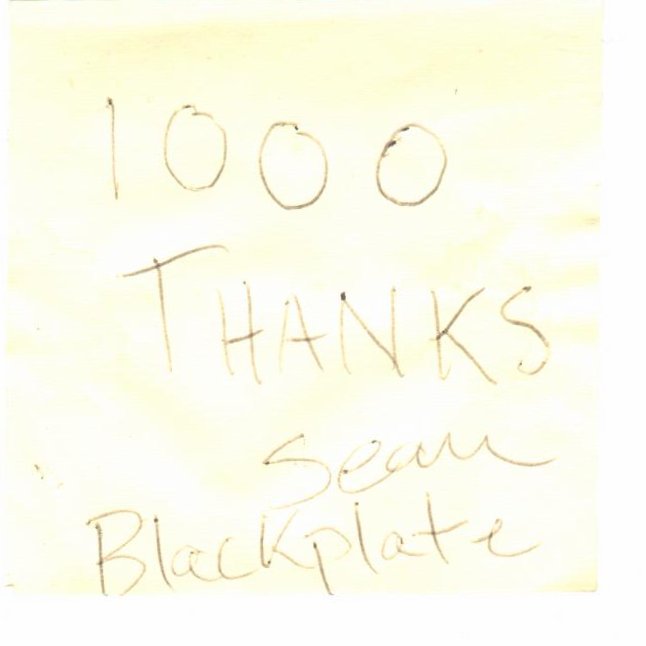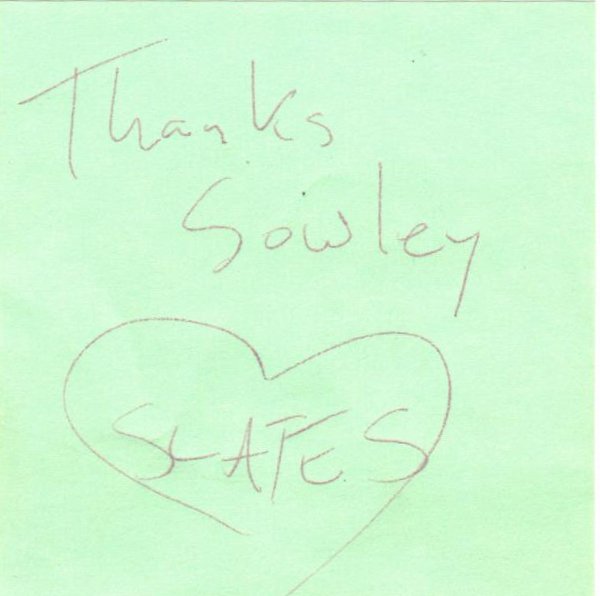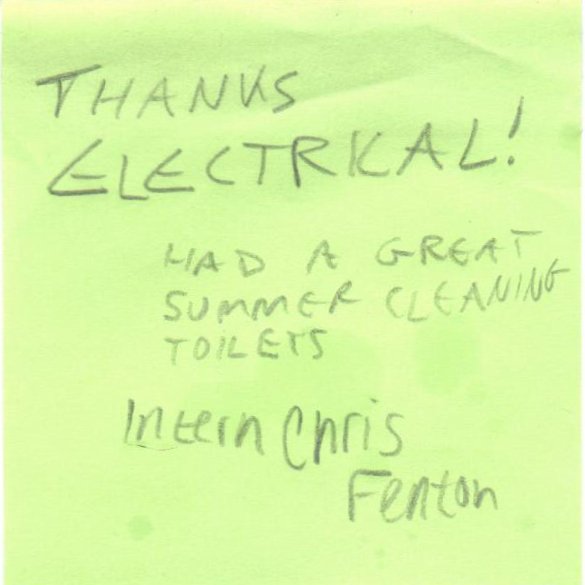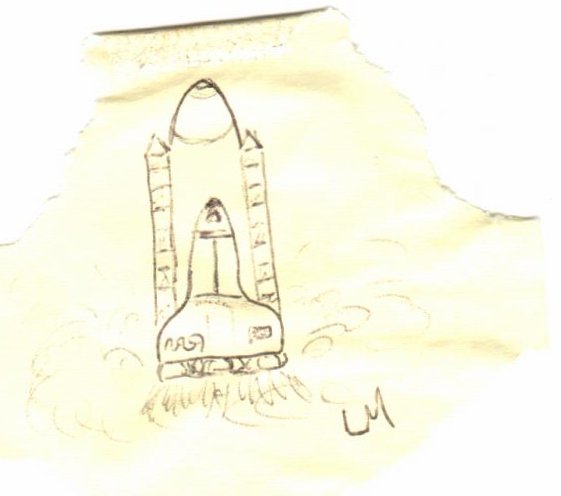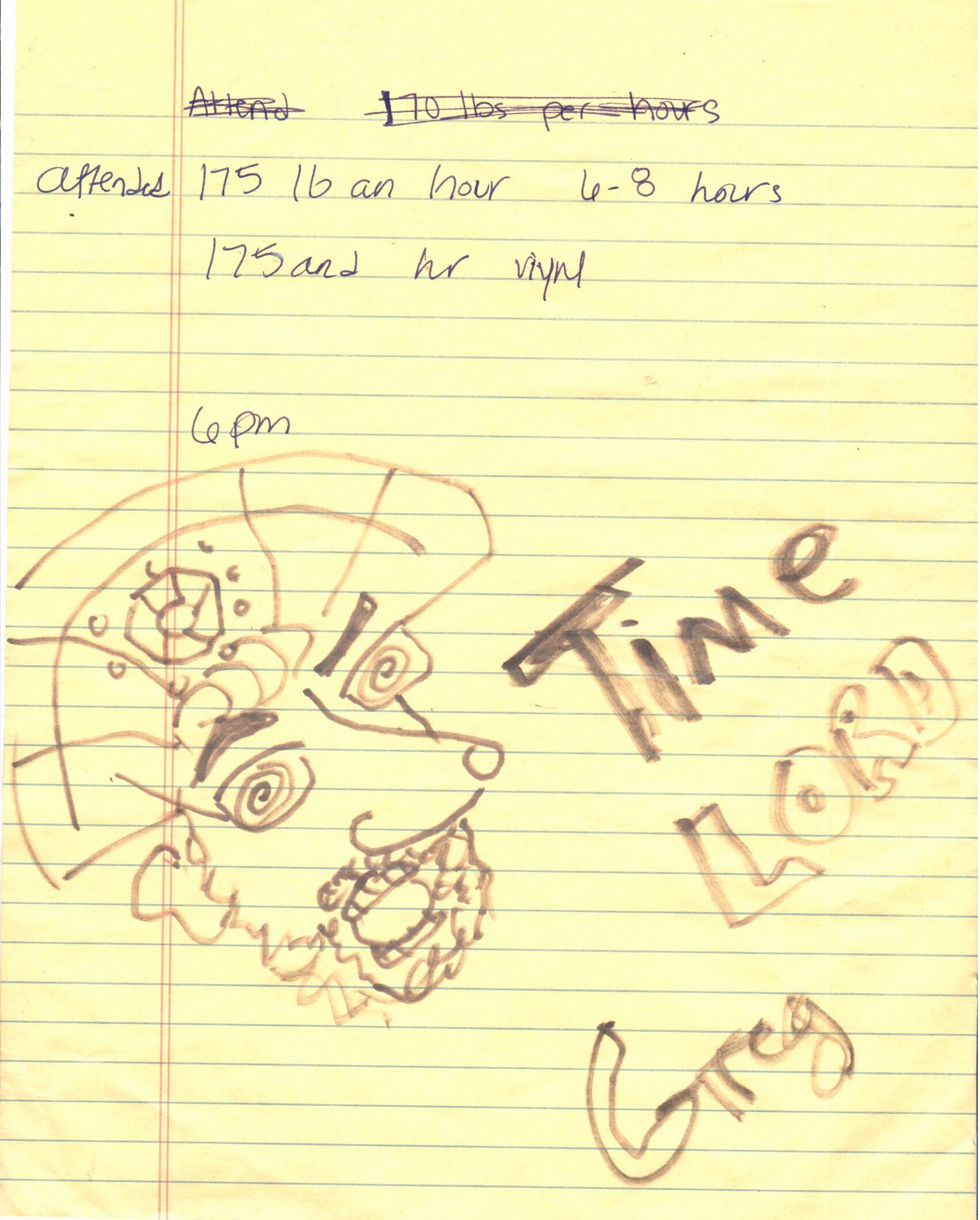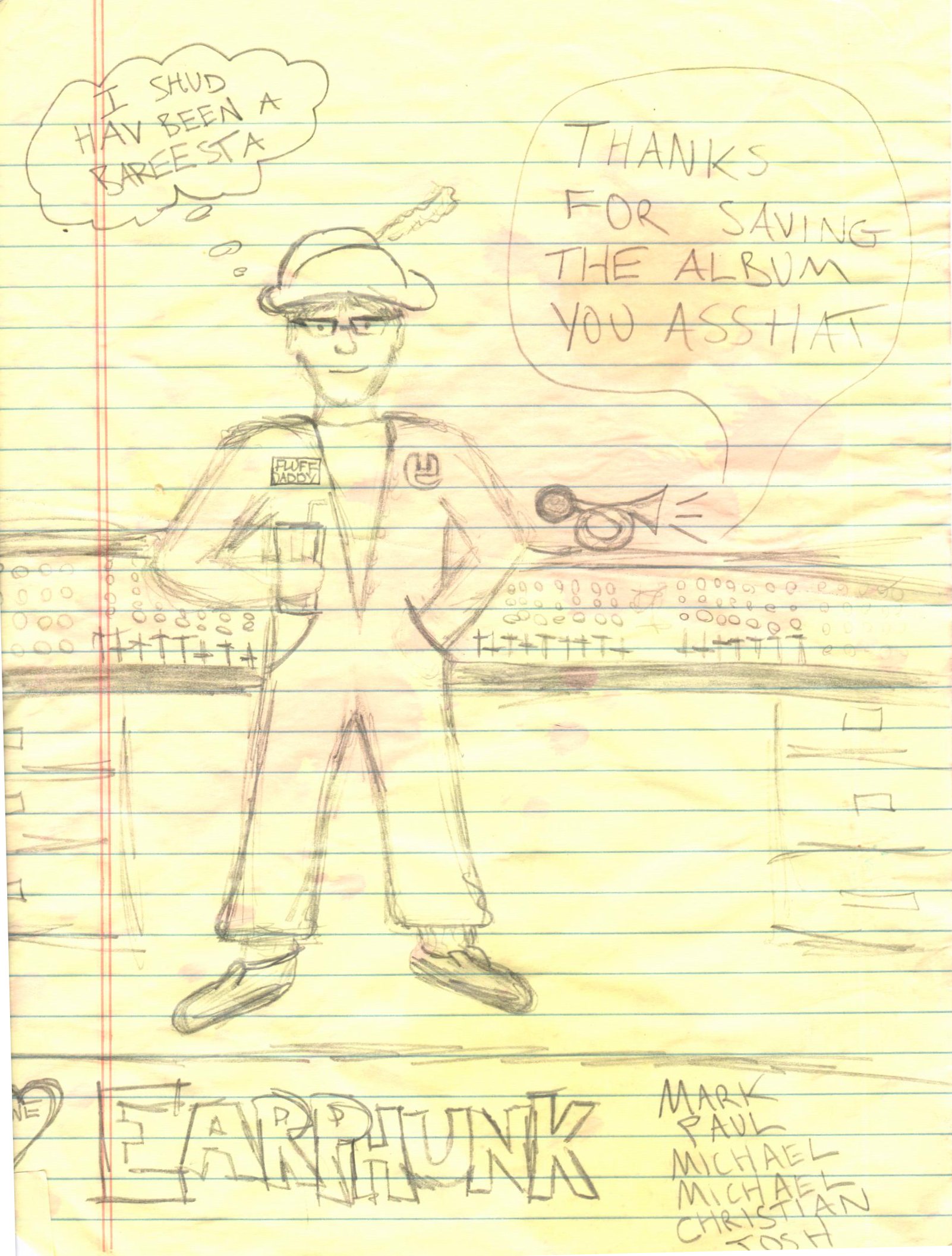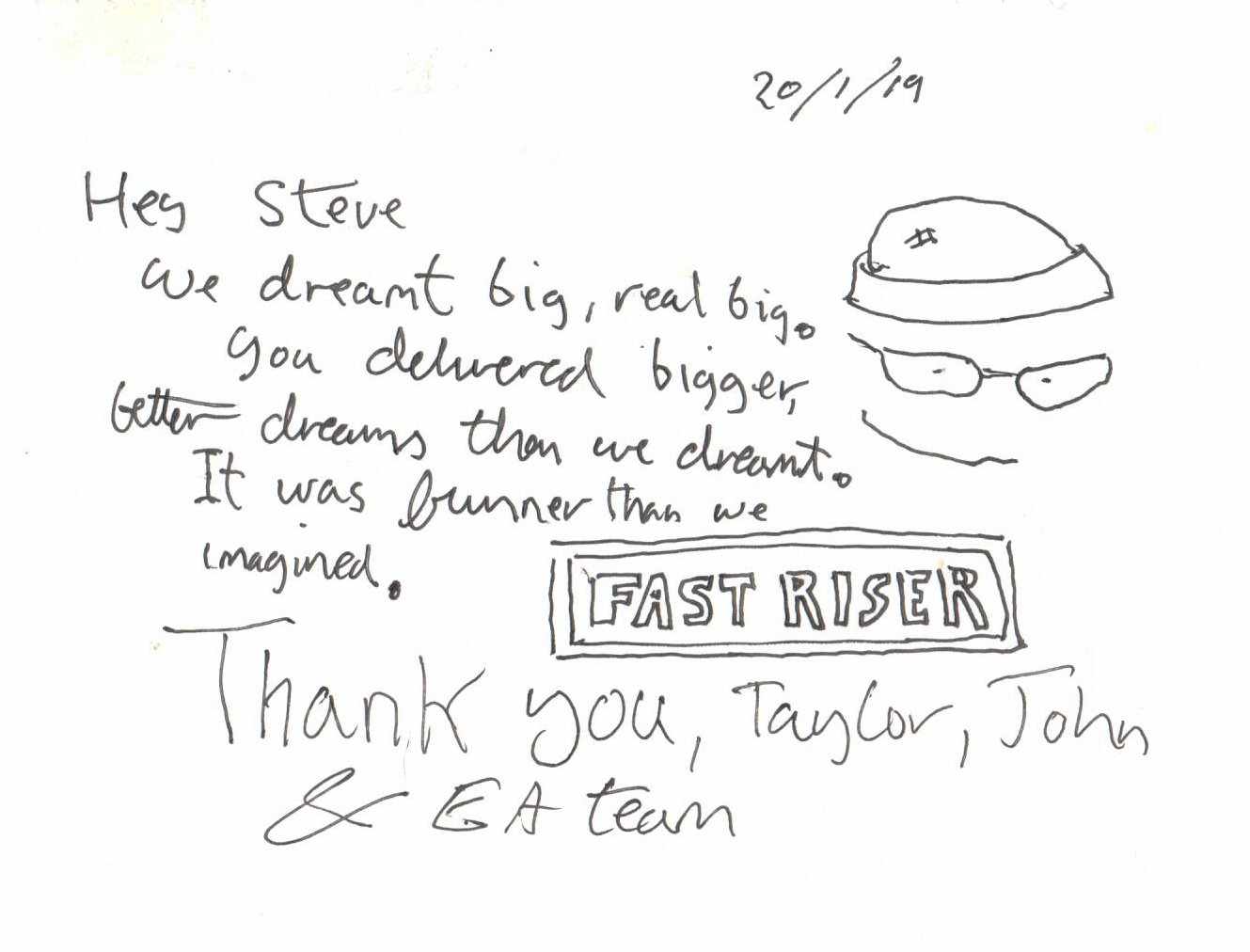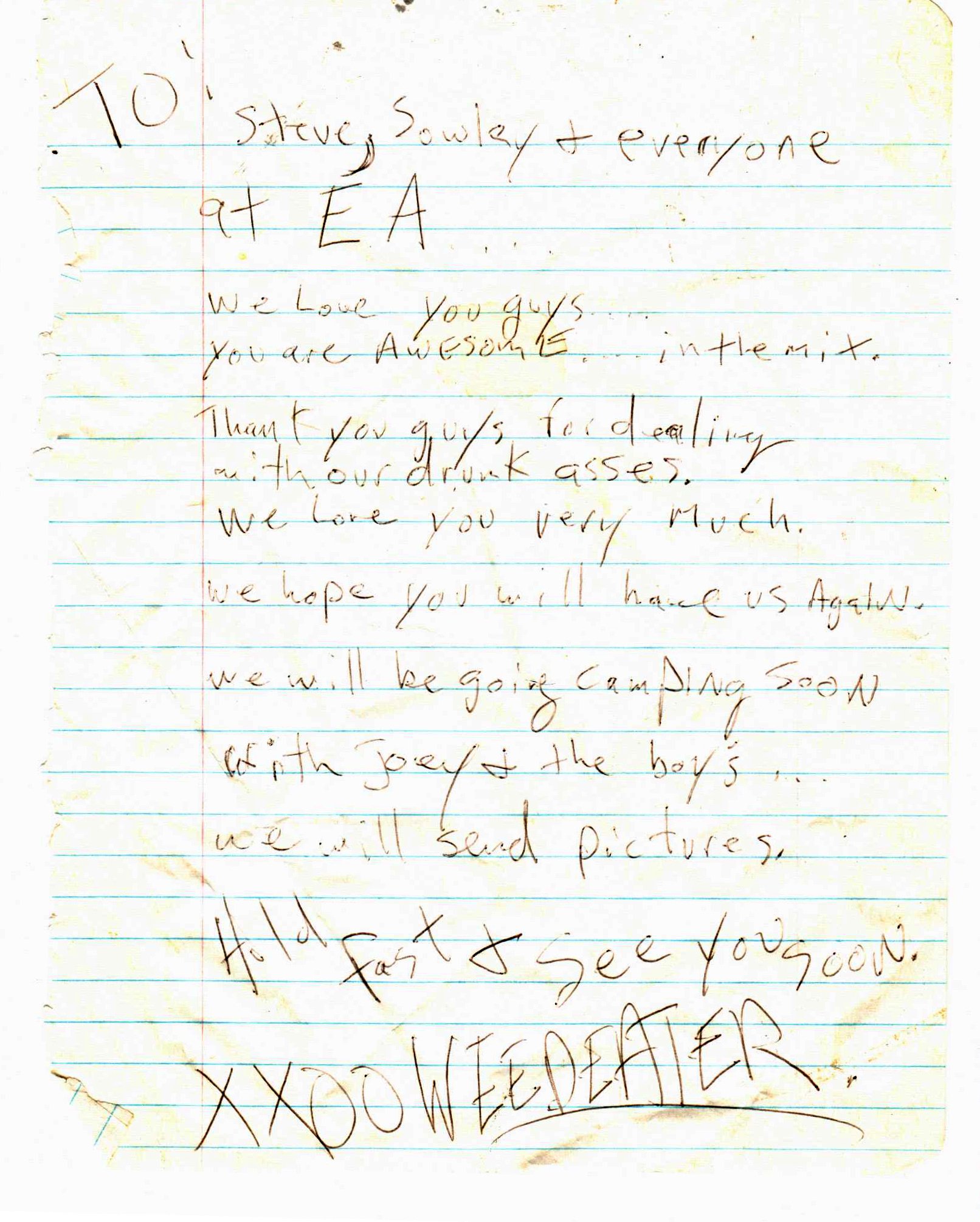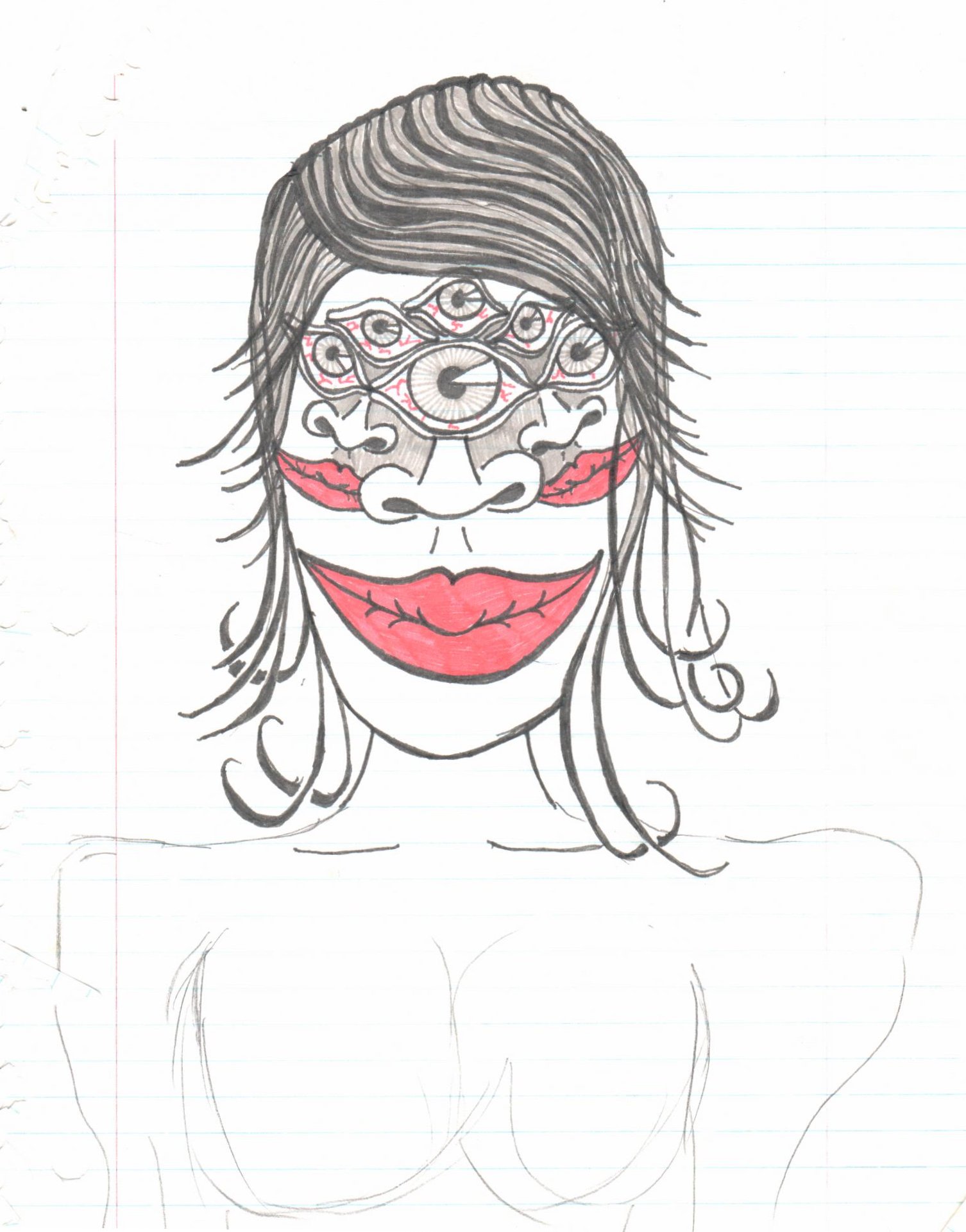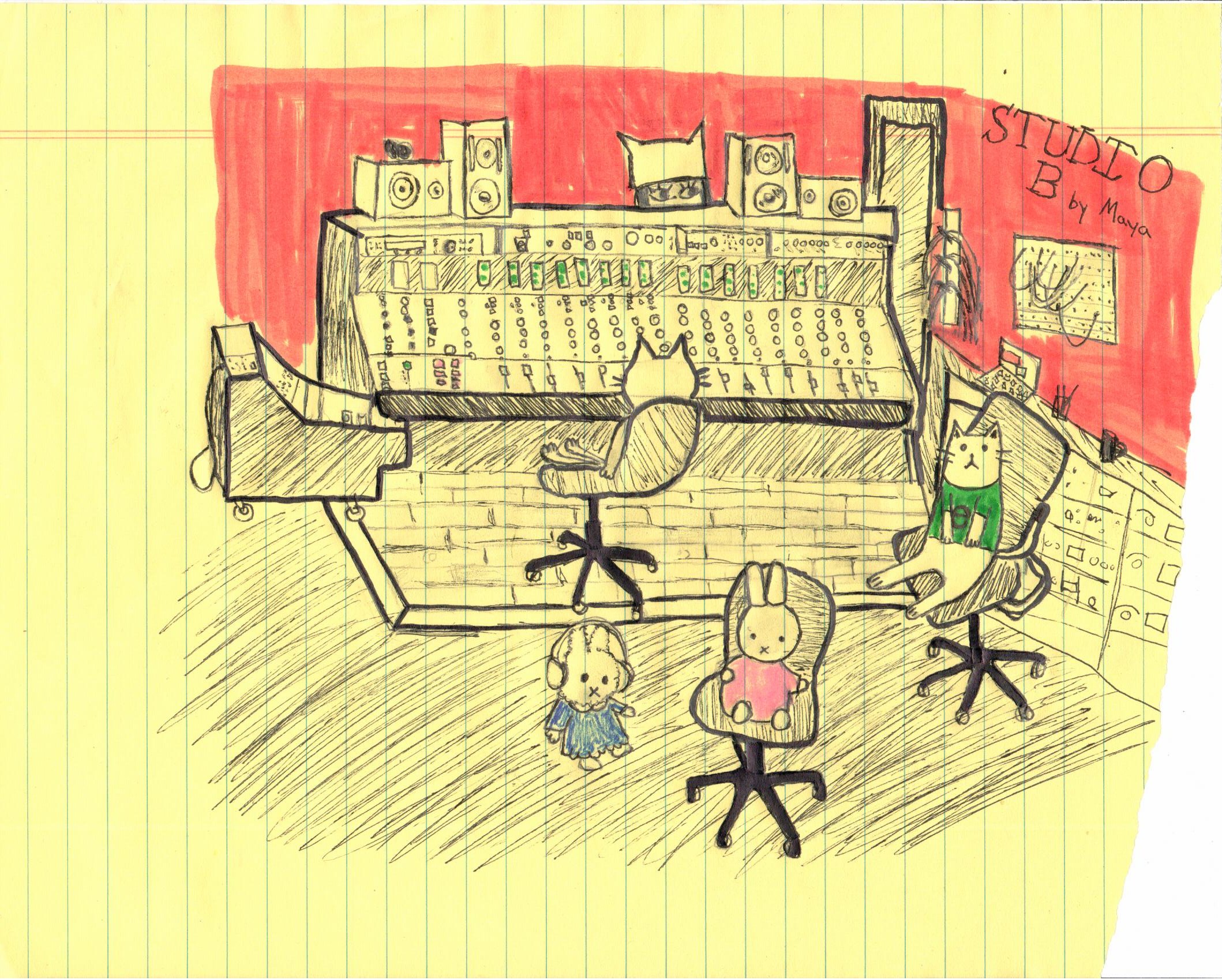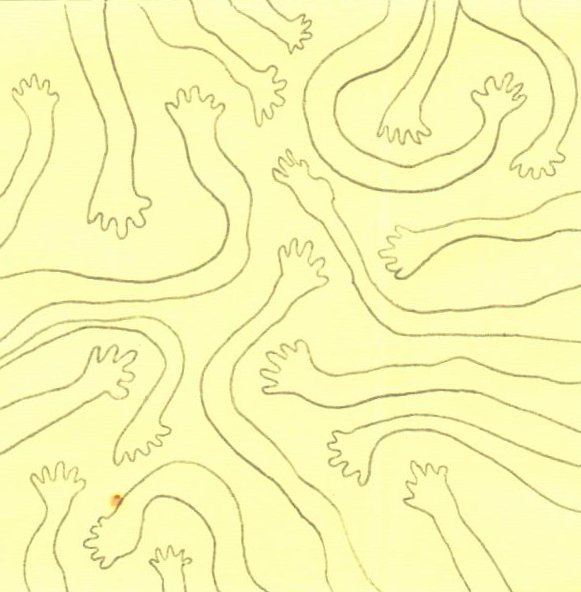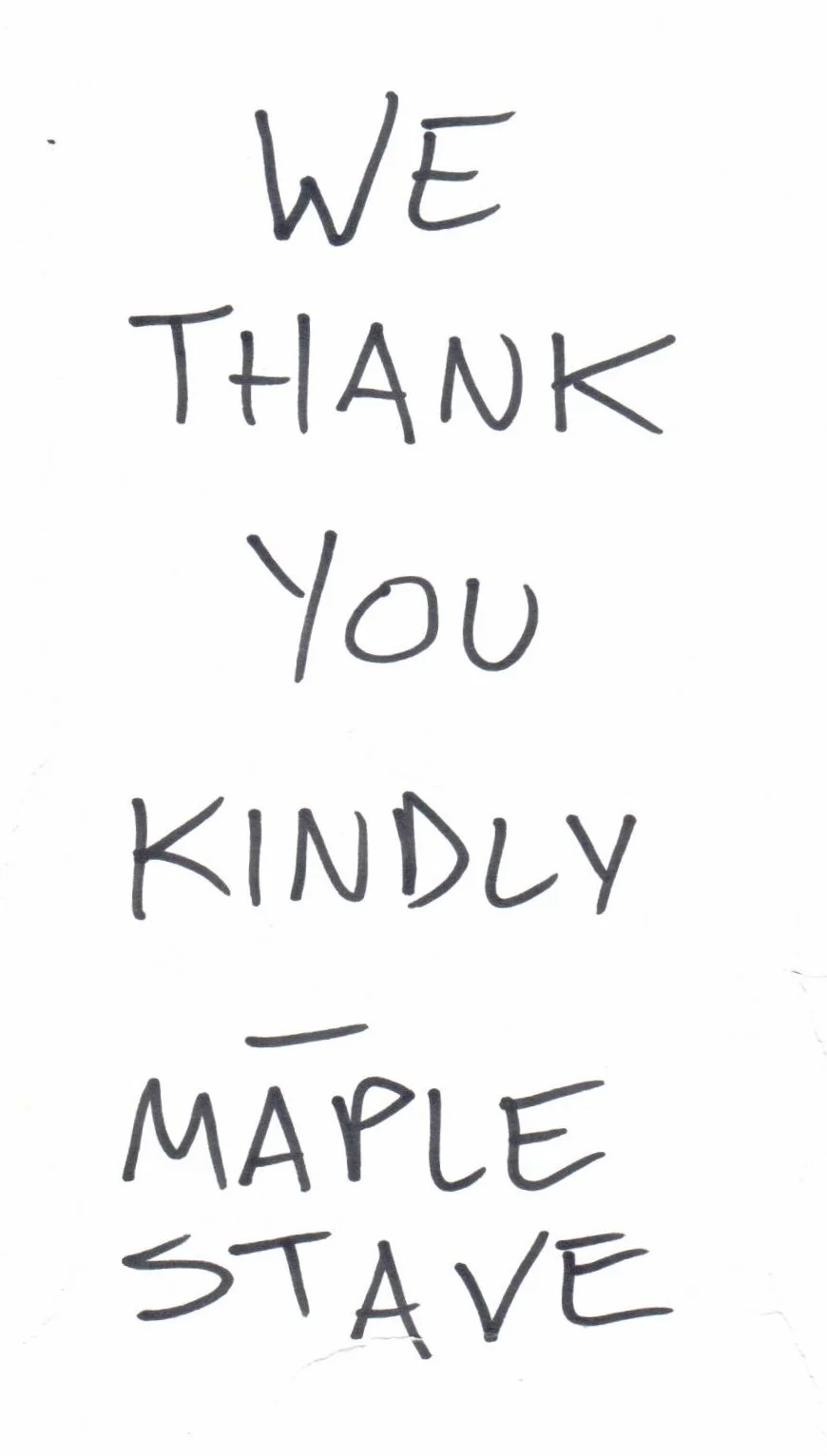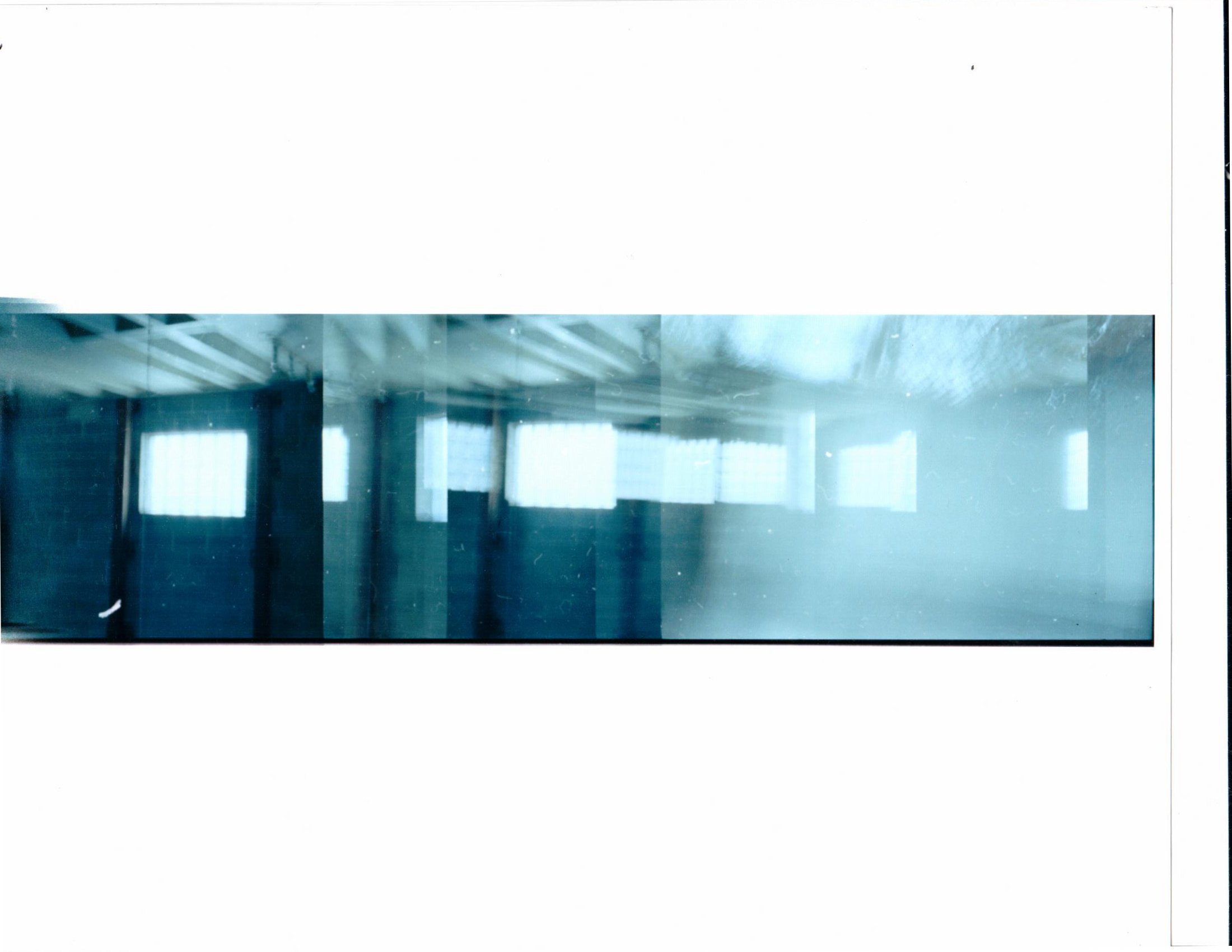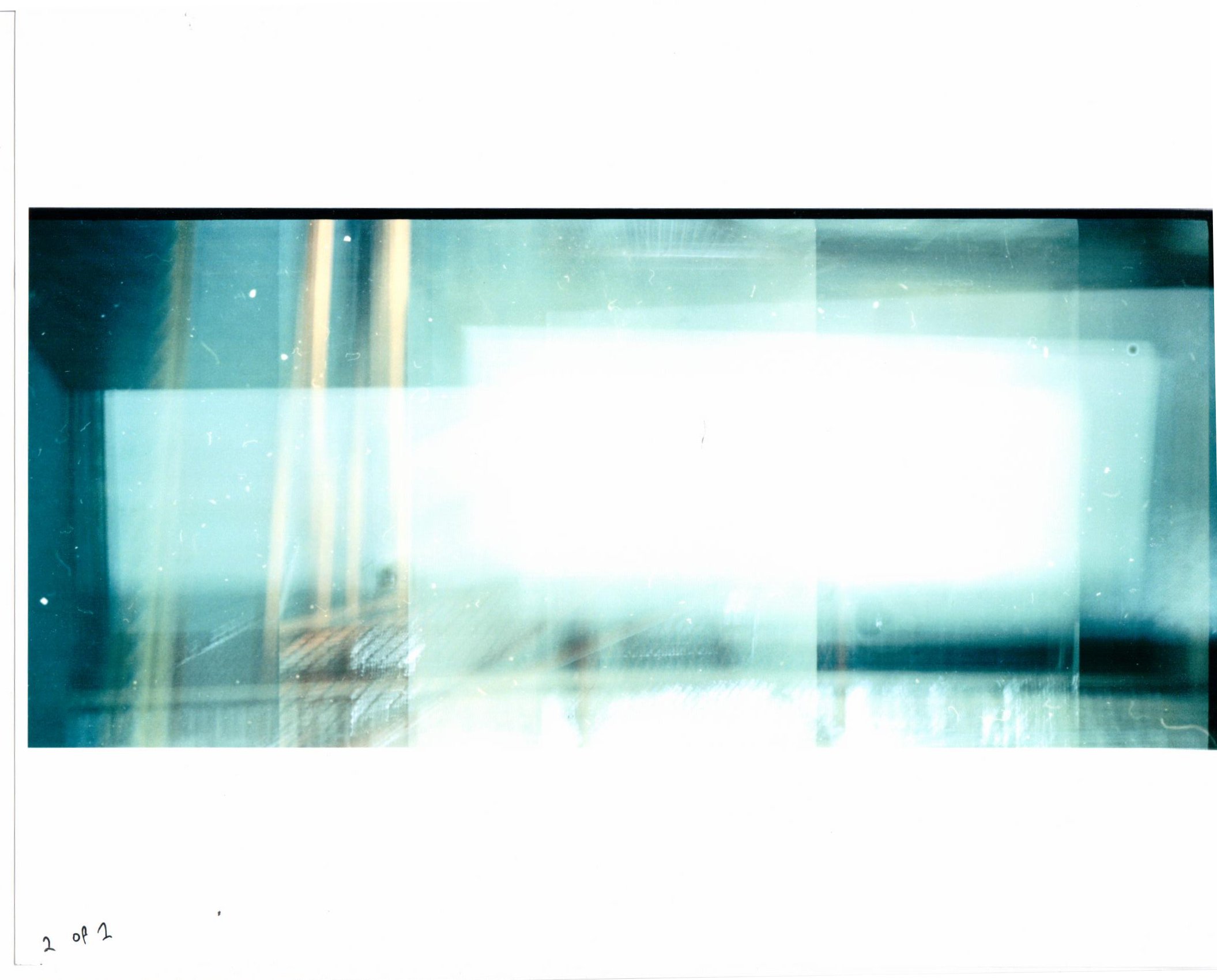EA Studio History

Electrical Audio started more than 25 years ago when founder Steve Albini set out to build a studio that could be his own home base, as well as a hub for independent artists looking to make records on their own terms.
Albini started his recording journey like many engineers, by recording his own musical projects. Eventually he started recording friends and bands in his peer group, and later he expanded beyond that group. Through the 80s and 90s, Steve freelanced at studios around Chicago and ultimately the world over, while also regularly working in a home studio built into his house on Francisco Ave in Chicago. That studio ultimately encompassed a few recording rooms in the basement of the house—a live room of framed drywall with a 7’ tall fabric-deadened ceiling, and a dead room with “walls” composed of exposed insulation between studs, plus a small “booth” that was rarely used— and a control room built into the attic, such that clients had to walk upstairs, through the kitchen, and then up another flight of stairs to hear playback.
The Francisco house’s studio hosted some iconic sessions from bands including Don Caballero, Zeni Geva, Craw, and Dazzling Killmen. But there were significant limitations to working in a studio retrofitted into a house rather than a purpose-built recording environment. During that period Steve stockpiled ideas and reflections from his sessions at commercial studios, noting what worked and what didn’t, and many of those observations informed decisions critical to the design of Electrical Audio.

EA founder Steve Albini in the Francisco house studio’s attic control room with Skin Graft Records band Yona-Kit (left to right: KK Null, Darien Gray, Albini, Thymme Jones, and Jim O’Rourke). This Neotek console is the same one still in use in Studio B today.
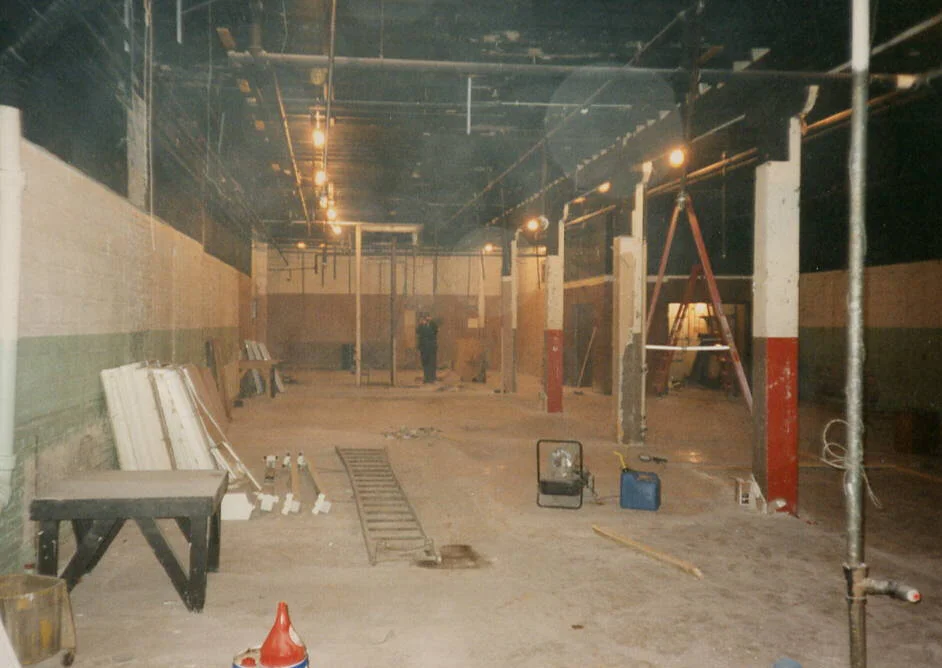
The space where Studio A now resides- before construction. Click/ tap to see more photos of initial construction.
Steve bought 2621 W Belmont, the future site of Electrical Audio, in 1995. Previously the building had been a screen printing shop, and before that, it is suspected to have been a part of the Bally pinball company, though we can’t find records to confirm this. Originally the building was used as a dairy barn. Steve hired a number of folks in his orbit to gut and convert the building into a studio. A few were professional tradesmen, but most were aspiring engineers or just friends eager to lend a hand in the mammoth undertaking of turning a raw warehouse into a professional recording studio. This ragtag group included a number of people that can still be found around the studio- take a look at these pictures from construction and you may recognize the engineer from one of your sessions!
In the course of construction, these folks tore out floors and walls. They removed the ceiling in the back of the building and built upwards to add height to Studio B’s live room. They knocked out concrete basement floors and dug trenches for new foundations for each studio room. They laid the adobe bricks that have become a defining part of Studio A, both visually and sonically. And after many months of arduous work, they had constructed a new recording studio.
To equip the studios, much of the gear from Steve’s home studio was brought over to Electrical, including the console in Studio B and much of the outboard that persists in the racks of both studios today. But building two working analog studios meant requisitioning a lot of new equipment. A new Neotek Elite console was ordered for Studio A, and some of the studios’ tape machines were purchased and installed during the later part of the build-out. Many of the tube mics now considered crown jewels in EA’s collection were purchased for pennies on the dollar because they were considered undesirably noisy at the time- many studio owners in the 90s were liquidating their tube mic collections in favor of low-noise FET equivalents. Curating a collection of instruments, microphones, and outboard gear that is comprehensive and exciting to musicians and engineers was an ongoing process, one that continues to this day.
The crew completed construction on Studio B in 1997, and the first session was recorded on April 4 of that year. Listen to that first recording below, which featured half of the members of the Skin Graft Records group Mt. Shasta, or click here to download the digitized multitracks from the session.
Owing to delays with equipment (the console arrived with its meter bridge smashed in, and had a number of technical issues) and construction taking longer than anticipated, Studio A opened a while later, in 1998. That studio was designed to be the “deluxe” offering, with twice as much of nearly everything - tape machines, console channels, outboard gear, and physical space- plus an extra tracking room allowing for more flexibility in layout and greater options for isolation. The studio also has more overbuilt acoustics with a unique venting system in most of the studio rooms, whisper-quiet HVAC, and is more thoroughly isolated from the outside world.
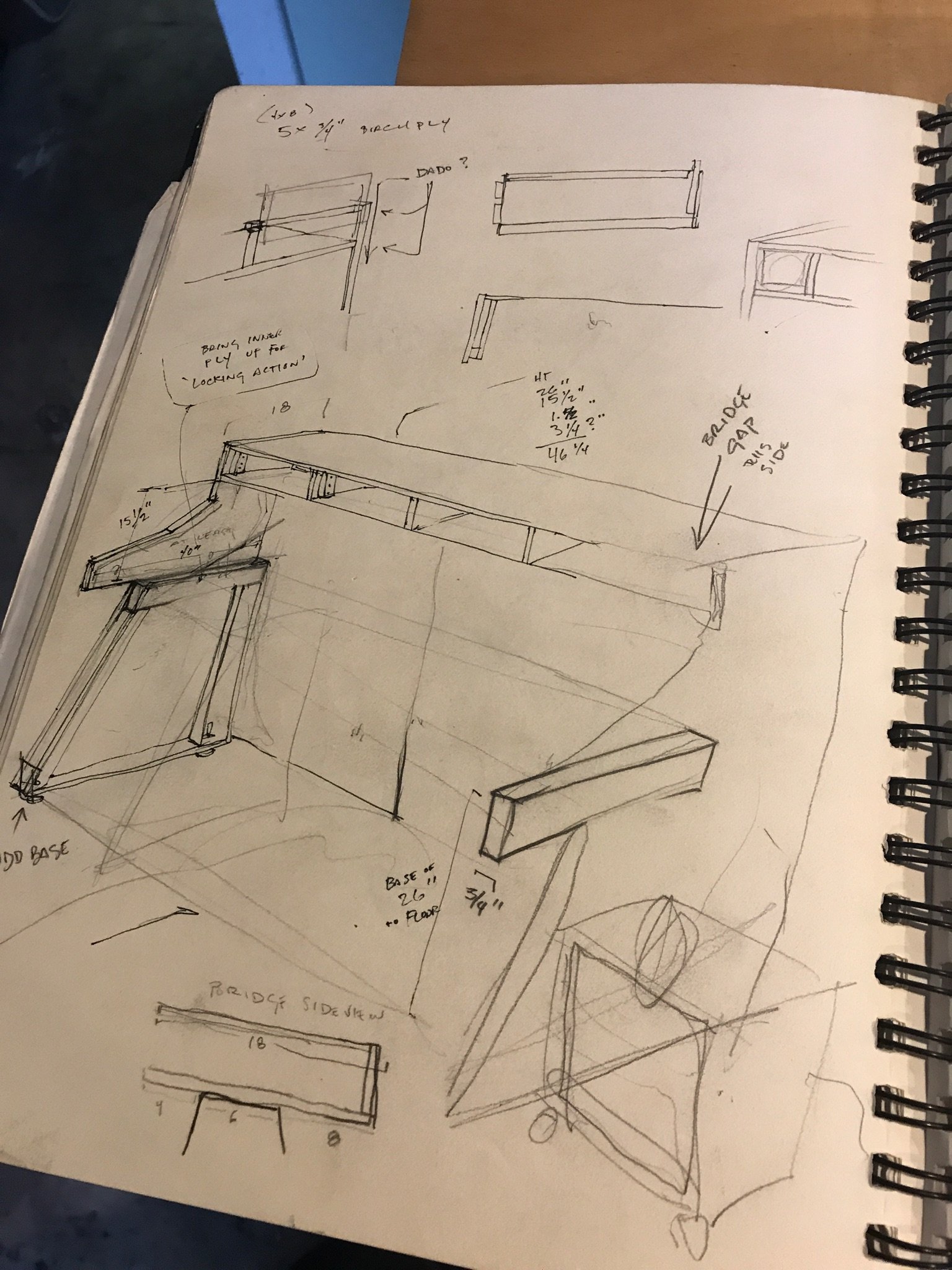
Hand-drawn plans for the Studio B console stand, with rack bays above
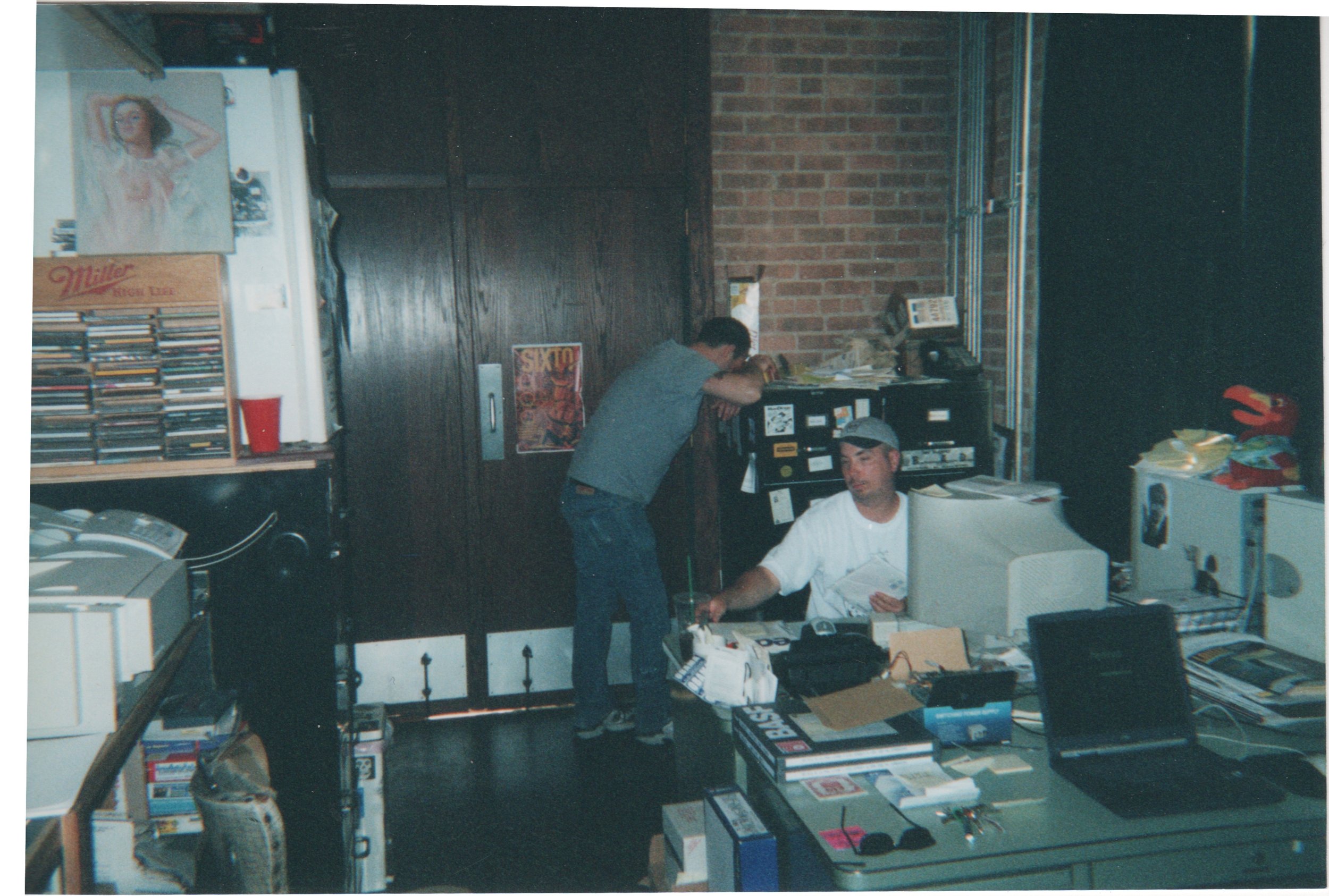
Studio Manager John Novotny and Building Manager Chad Smith in the studio office. Click for more pictures from the “early days” of EA.
There were some kinks to be worked out in its early years, including a nagging, and on occasion, show-stopping electromagnetic interference from a neighbor’s poorly wired office space, involving a regular-old office copier that was getting picked up by guitar pickups and tape heads for blocks in every direction. But the studio had opened for business and started to get bookings. A regular studio staff evolved partly from the construction crew with a handful of outside additions, with most everyone learning on the job, in line with the DIY ethos that underpinned the studio.
The phones rang. Sessions were booked. Bands came and crashed, made a record, swapped stories and made friends. Over time it became a job, and of course, that was the goal all along- to build a studio where records were made day-in and day-out.
Somewhere along the way, the Fluffy Coffee was invented. Though its origins are uncertain, somehow the studio ended up creating a signature coffee drink- a cappuccino with maple syrup and cinnamon served in a fittingly gargantuan 22-oz. glass. It even inspired one of our clients to write a song in tribute:
Electrical Audio was conceived as an analog-centered environment, where a large-format recording console was the beating heart of the studio, outboard gear was used to amplify and process audio, and signals were routed through patchbays. Electrical Audio came to be associated with tape recording because its founder Steve Albini was outspoken in his adherence to the medium, but the studios were still designed to accommodate digital recording. While the studio was unable to afford its own digital rig in the years after the expensive built-out (a 24-track Pro Tools rig cost tens of thousands of dollars in the early 2000s), digital recordings took place even within its first years as freelancers brought their own setups and the studio regularly rented one, commonly from engineer/ producer Bjorn Thorsrud. Eventually, the studio bought Bjorn’s Pro Tools setup, and, as it was the only one available, for years it was dragged between the two studios for each session that wanted to record to digital. Later, EA partnered with Studiomedia Recording (SRC) and ended up with a second Pro Tools rig, so each studio was finally permanently outfitted with a digital recording rig.
Since opening, the studio has hosted thousands of sessions. Some of our clients have names that are instantly recognizable, but many are independent artists who make music as a part of their lives, rather than as their sole livelihood.
Years passed, and EA celebrated its 10th anniversary, its 20th, its 25th. Such longevity is rare in the studio world, and achieving self-sufficiency and sustainability has been hard-fought, a testament to the relationships our staff have built and their continued devotion to providing each and every client with a great recording and, moreover, a great experience.
The core tenets that inspired the establishment of the studio, that even artists without major label support could rent a world-class facility with great equipment for a fair rate, and that their endeavor of musical creativity would be treated with respect if not sacredness by the engineers and studio staff attending those artists, persist to this day. Musician Brian Case (FACS, Disappears, The Ponys, 90 Day Men) has recorded at Electrical throughout its history, from working with Steve on his final session back to its first days, and as such he has a unique perspective as a through-line in the history of our studio: “Electrical Audio was, and remains to this day, the best studio for the most reasonable rate, maybe in the world. Between the access to the microphone collection and the fact that every piece of gear in the studio works is worth the price alone... It's also very comfortable, I don't feel like I'm watching the clock when I'm working there, it's an easy space to disappear into your art… People who work there, either on staff or as artists, want to be there, and that gives the space a heavy vibe, like a kind of respect or understanding that by choosing to be there you are a part of a certain lineage or way of thinking about how you make music, or what you value in your process.”
In May 2024, Steve Albini died unexpectedly. While we lost the masthead engineer who conceived of and founded the studio and warmed it with his presence daily for 26 years, our staff remain committed to keeping the studio alive. We have lost a guiding force, but we can still offer clients the product of Steve’s vision combined with the hard work of the folks who have worked here through the studio’s rich history.

"Fridge notes" have become a tradition that bands use to express gratitude to their engineer and studio staff.

"Fridge notes" have become a tradition that bands use to express gratitude to their engineer and studio staff.

"Fridge notes" have become a tradition that bands use to express gratitude to their engineer and studio staff.

"Fridge notes" have become a tradition that bands use to express gratitude to their engineer and studio staff.
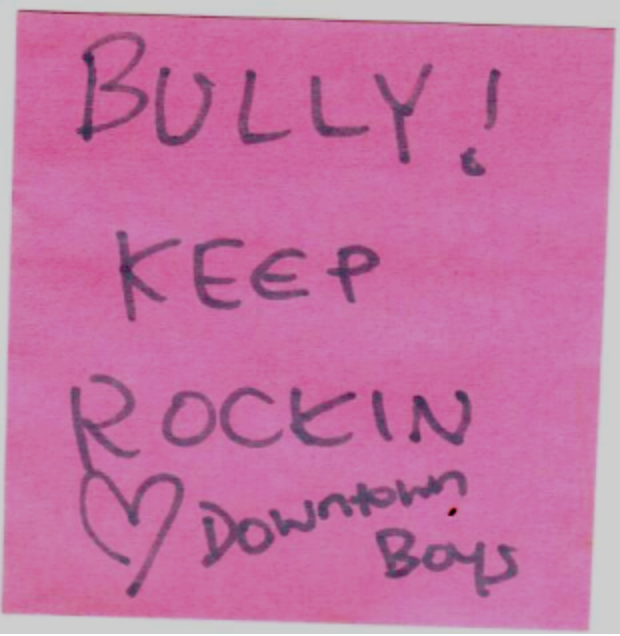
"Fridge notes" have become a tradition that bands use to express gratitude to their engineer and studio staff.

"Fridge notes" have become a tradition that bands use to express gratitude to their engineer and studio staff.

"Fridge notes" have become a tradition that bands use to express gratitude to their engineer and studio staff.

"Fridge notes" have become a tradition that bands use to express gratitude to their engineer and studio staff.

"Fridge notes" have become a tradition that bands use to express gratitude to their engineer and studio staff.

"Fridge notes" have become a tradition that bands use to express gratitude to their engineer and studio staff.

"Fridge notes" have become a tradition that bands use to express gratitude to their engineer and studio staff.

"Fridge notes" have become a tradition that bands use to express gratitude to their engineer and studio staff.

"Fridge notes" have become a tradition that bands use to express gratitude to their engineer and studio staff.

"Fridge notes" have become a tradition that bands use to express gratitude to their engineer and studio staff.
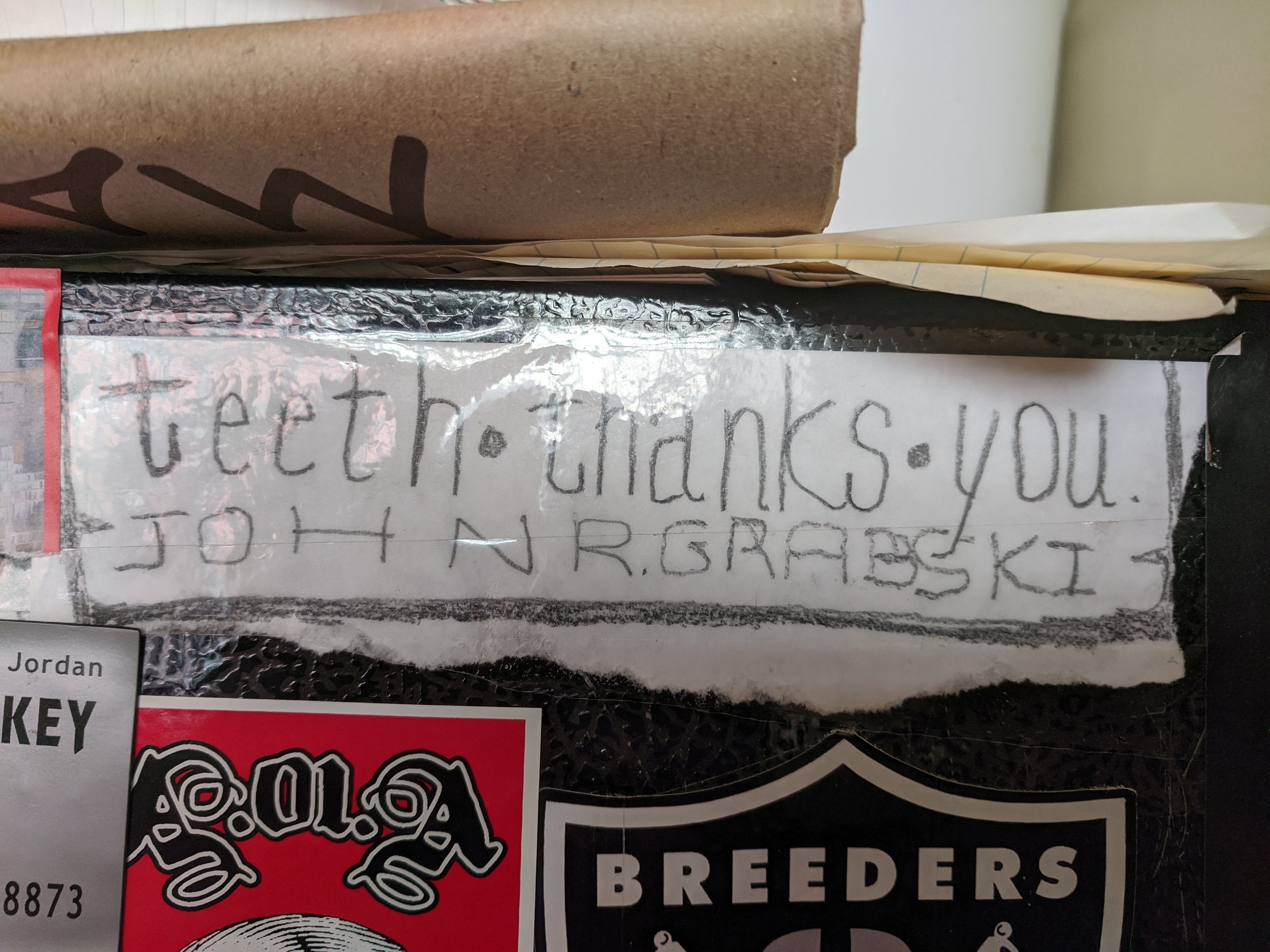
"Fridge notes" have become a tradition that bands use to express gratitude to their engineer and studio staff.

"Fridge notes" have become a tradition that bands use to express gratitude to their engineer and studio staff.

"Fridge notes" have become a tradition that bands use to express gratitude to their engineer and studio staff.
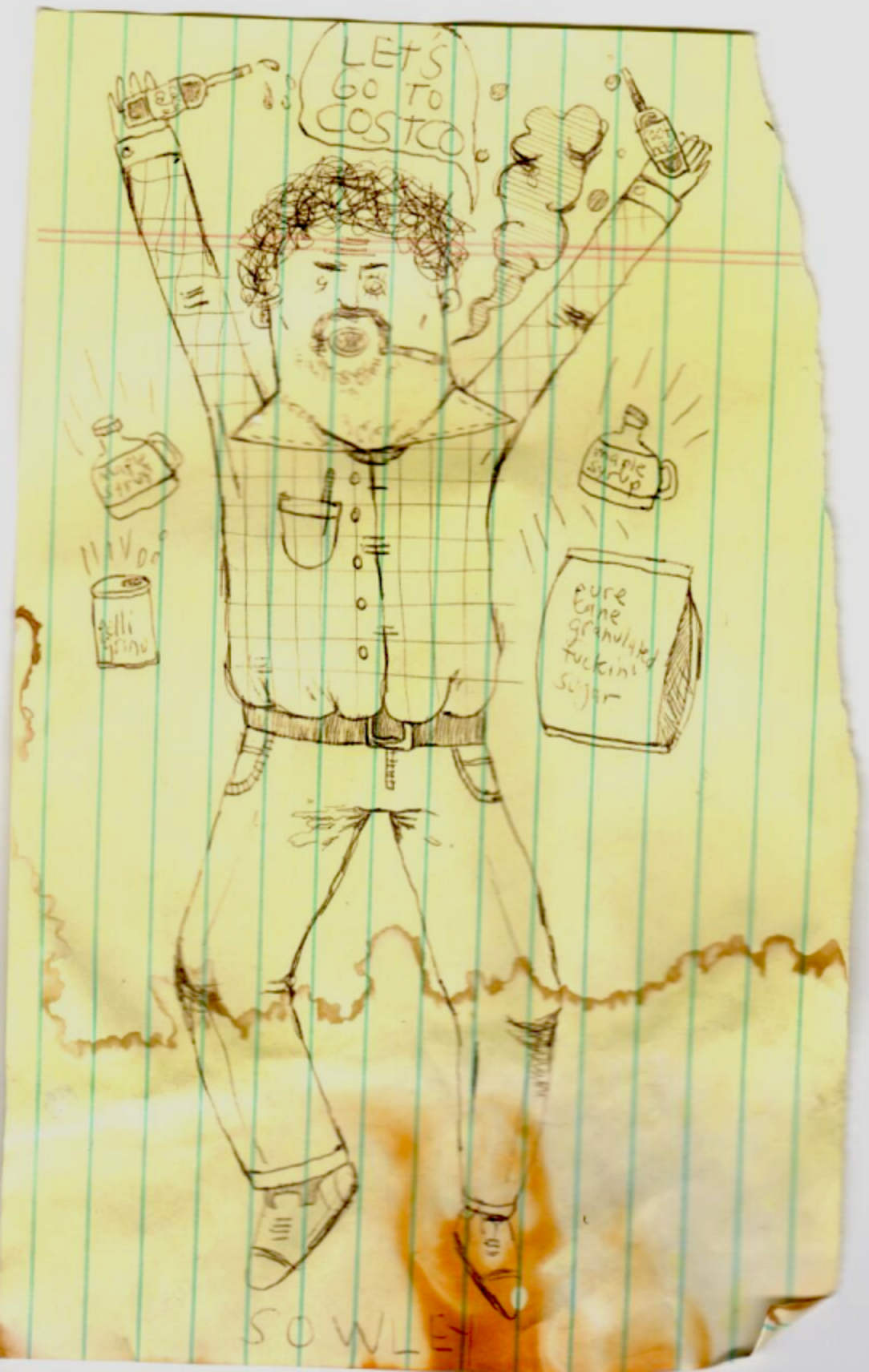
"Fridge notes" have become a tradition that bands use to express gratitude to their engineer and studio staff.

"Fridge notes" have become a tradition that bands use to express gratitude to their engineer and studio staff.

"Fridge notes" have become a tradition that bands use to express gratitude to their engineer and studio staff.

"Fridge notes" have become a tradition that bands use to express gratitude to their engineer and studio staff.

"Fridge notes" have become a tradition that bands use to express gratitude to their engineer and studio staff.
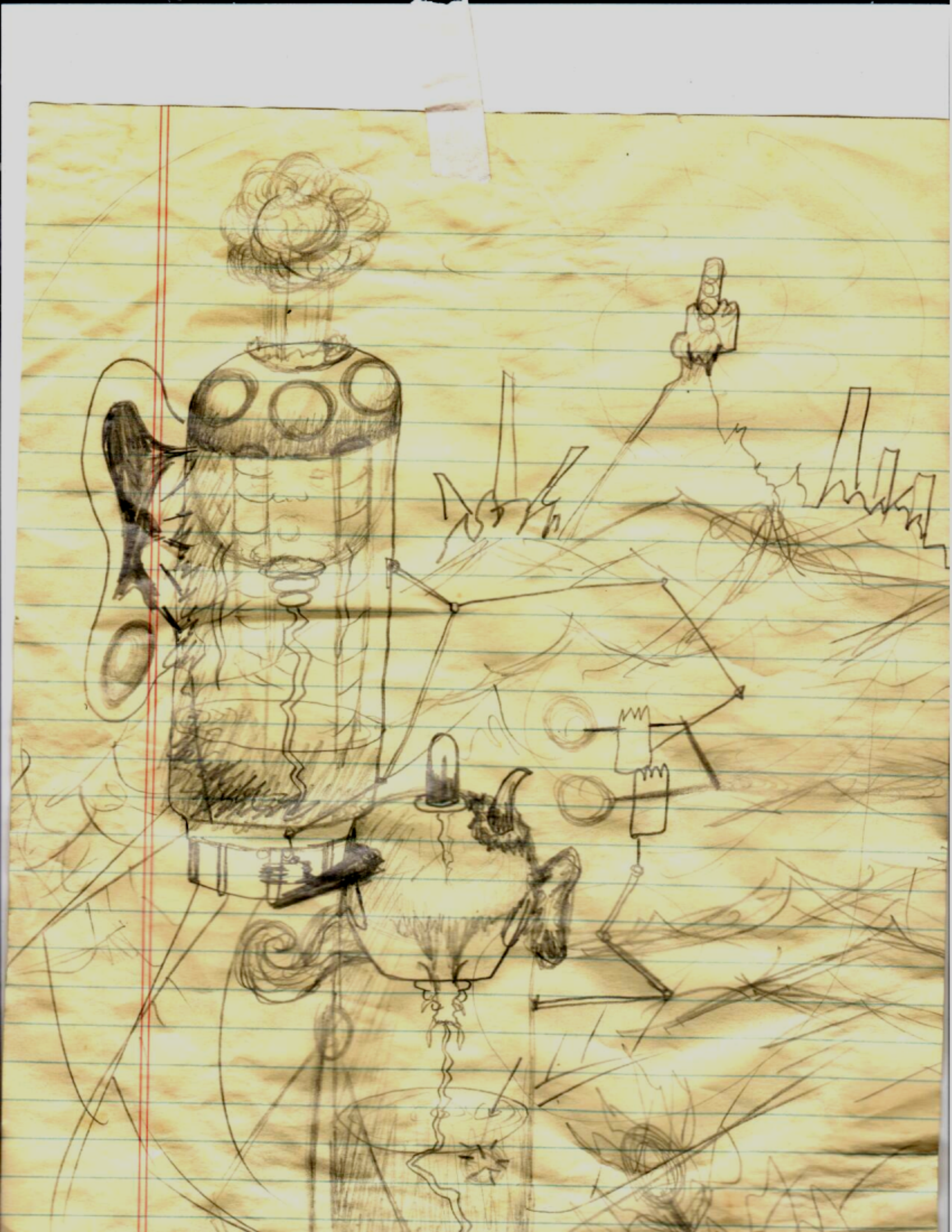
"Fridge notes" have become a tradition that bands use to express gratitude to their engineer and studio staff.

"Fridge notes" have become a tradition that bands use to express gratitude to their engineer and studio staff.

"Fridge notes" have become a tradition that bands use to express gratitude to their engineer and studio staff.

"Fridge notes" have become a tradition that bands use to express gratitude to their engineer and studio staff.

"Fridge notes" have become a tradition that bands use to express gratitude to their engineer and studio staff.

"Fridge notes" have become a tradition that bands use to express gratitude to their engineer and studio staff.
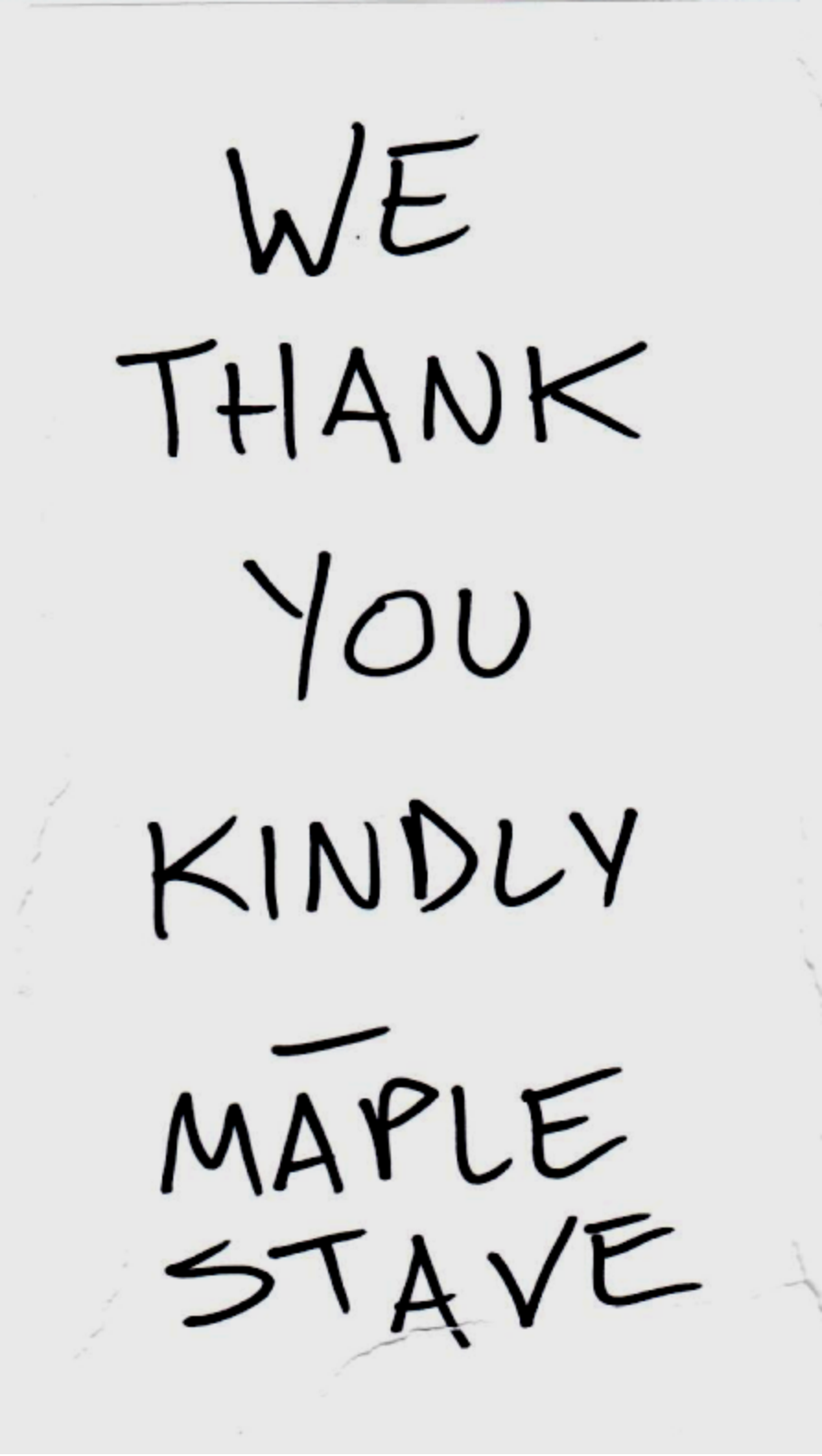
"Fridge notes" have become a tradition that bands use to express gratitude to their engineer and studio staff.
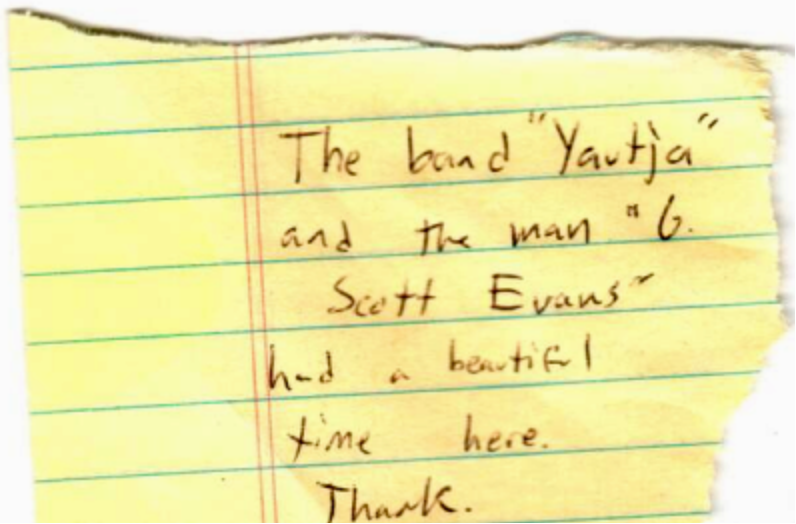
"Fridge notes" have become a tradition that bands use to express gratitude to their engineer and studio staff.

"Fridge notes" have become a tradition that bands use to express gratitude to their engineer and studio staff.

"Fridge notes" have become a tradition that bands use to express gratitude to their engineer and studio staff.

"Fridge notes" have become a tradition that bands use to express gratitude to their engineer and studio staff.
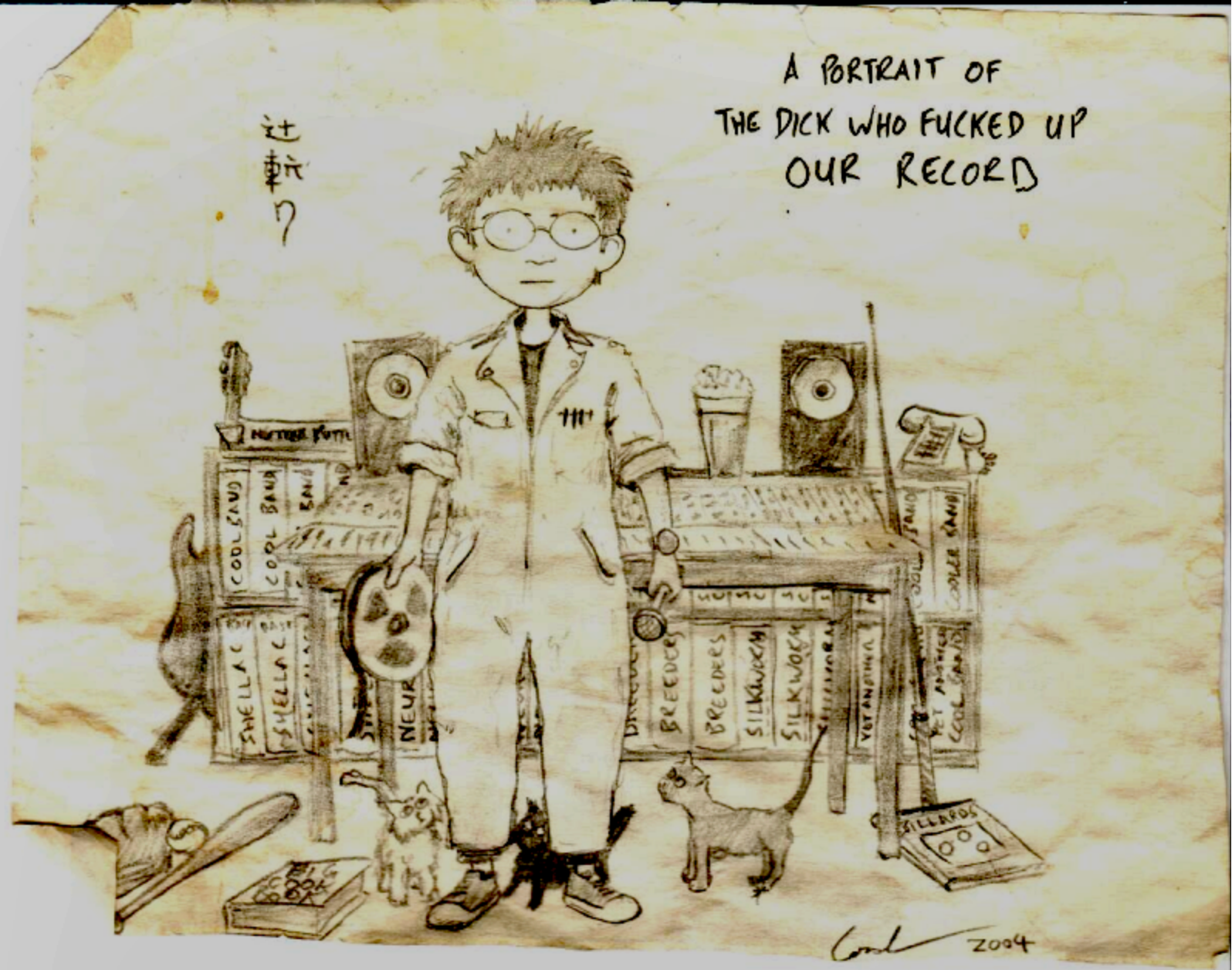
"Fridge notes" have become a tradition that bands use to express gratitude to their engineer and studio staff.

"Fridge notes" have become a tradition that bands use to express gratitude to their engineer and studio staff.

"Fridge notes" have become a tradition that bands use to express gratitude to their engineer and studio staff.

"Fridge notes" have become a tradition that bands use to express gratitude to their engineer and studio staff.

"Fridge notes" have become a tradition that bands use to express gratitude to their engineer and studio staff.
